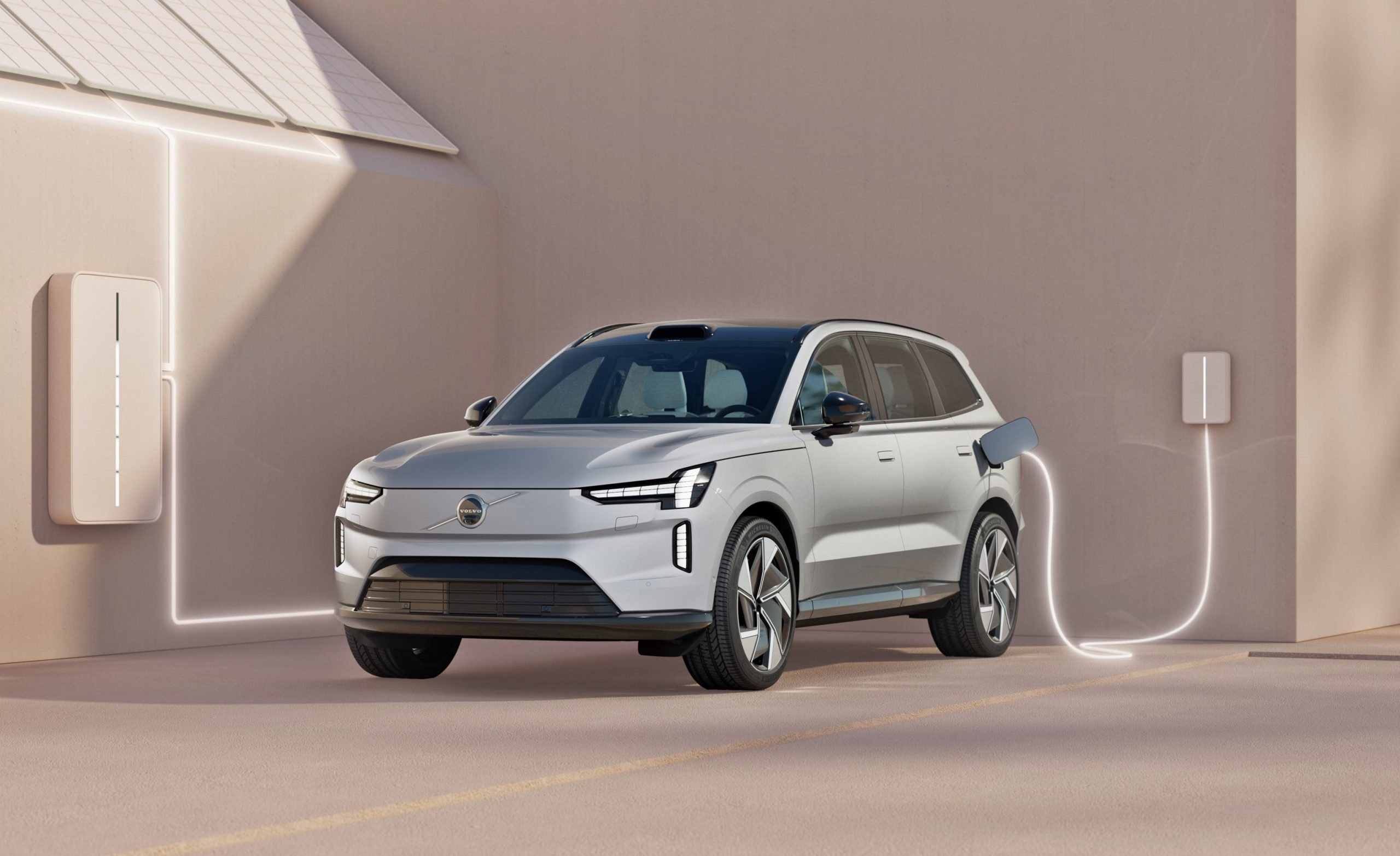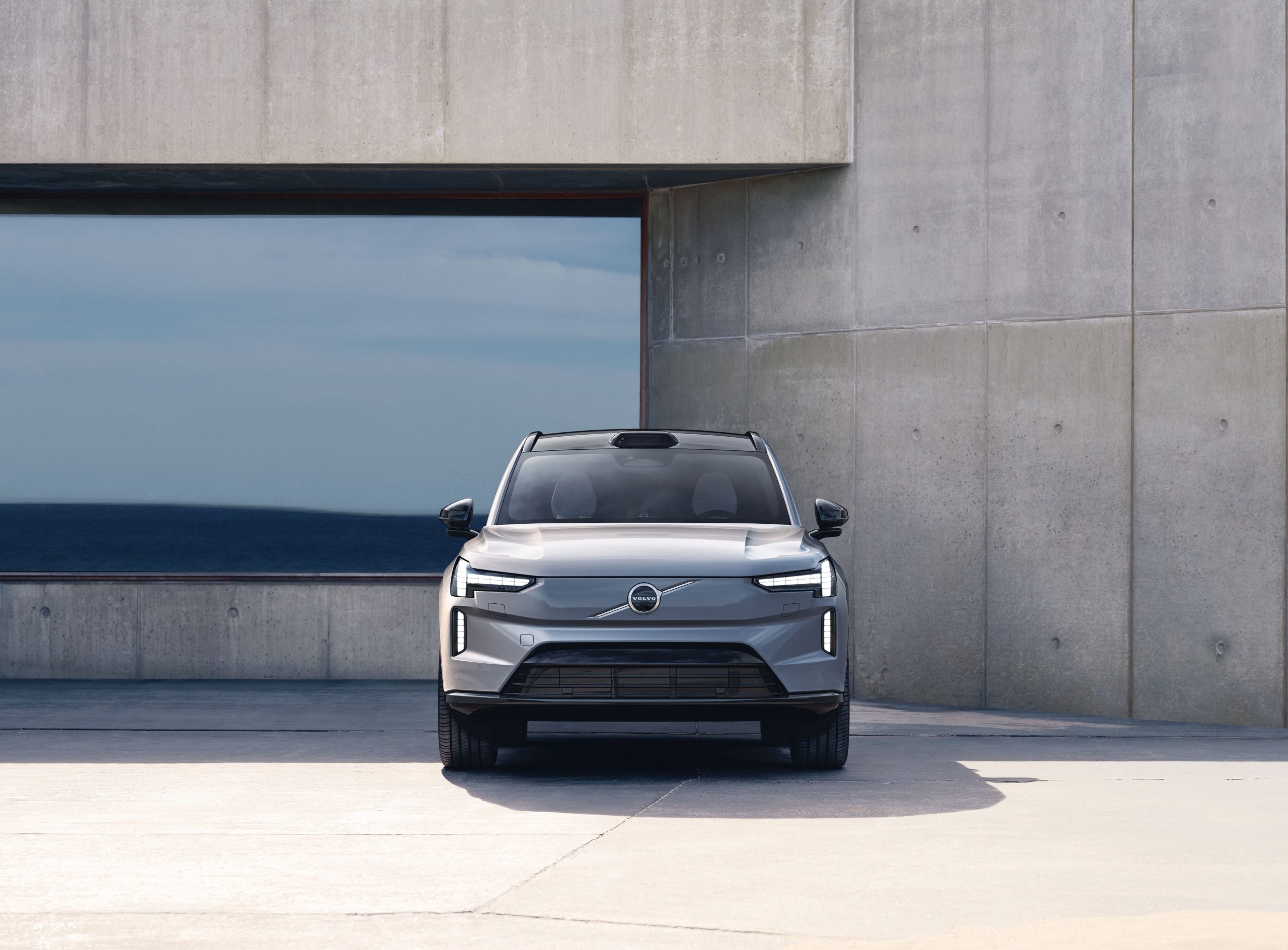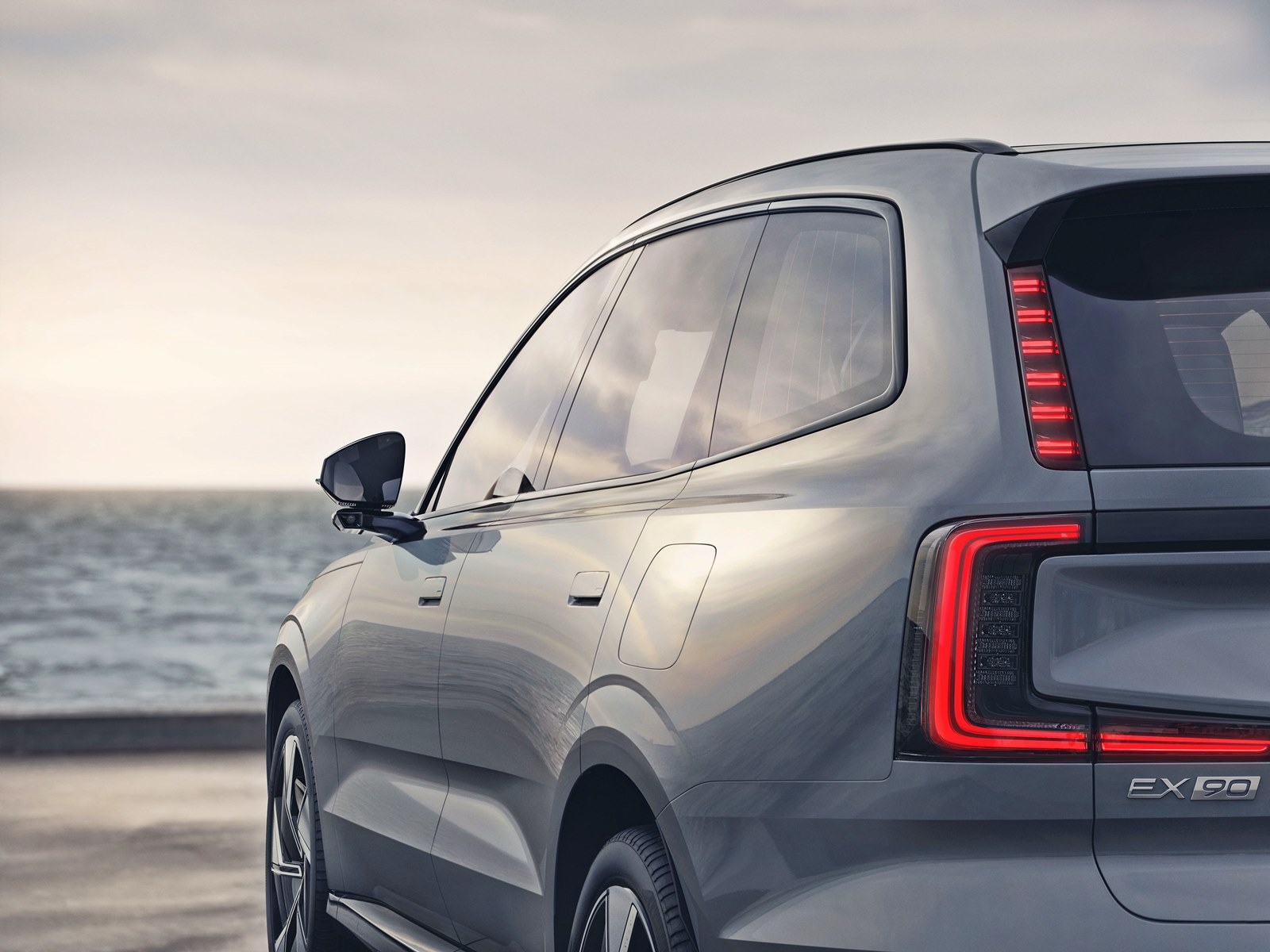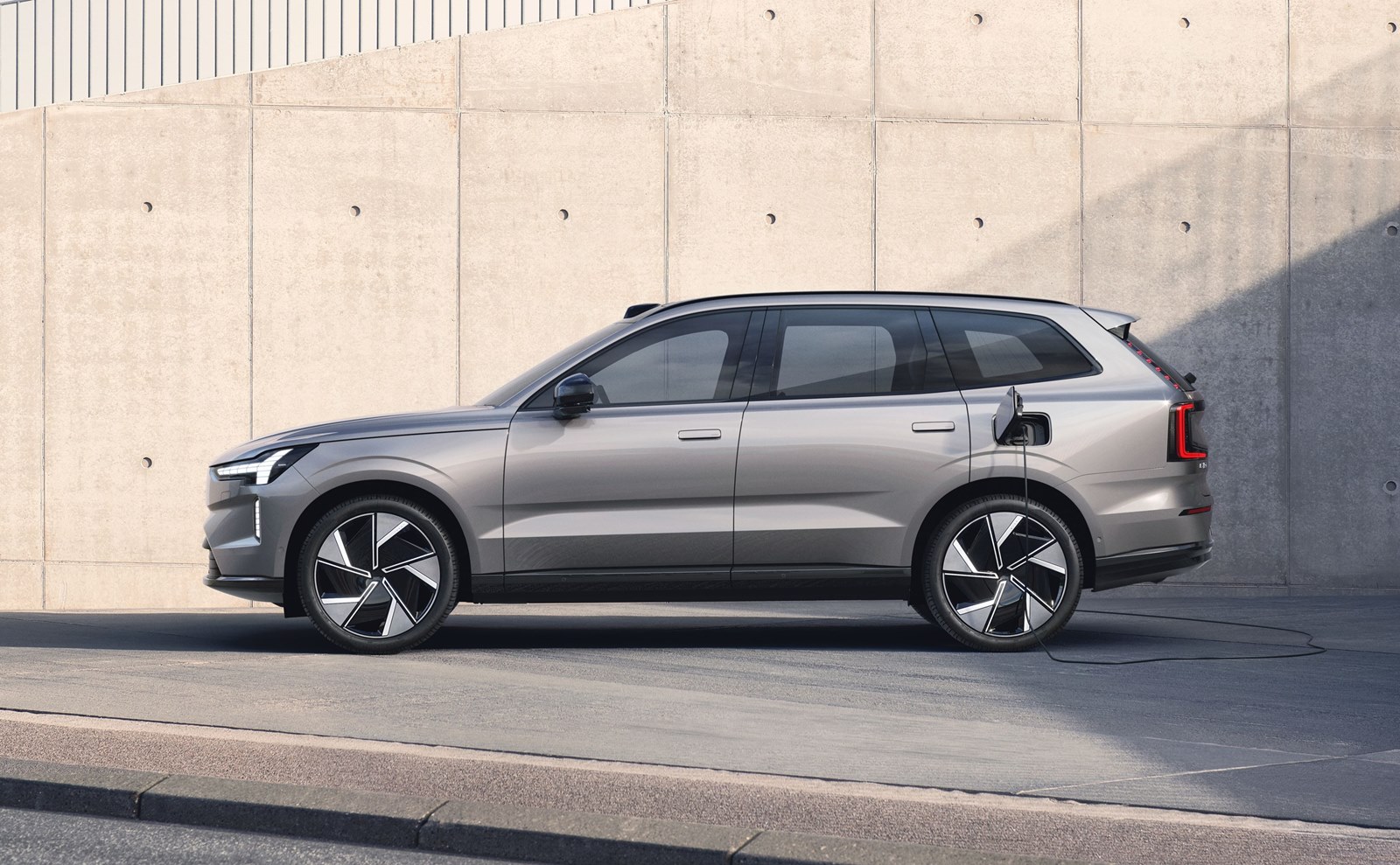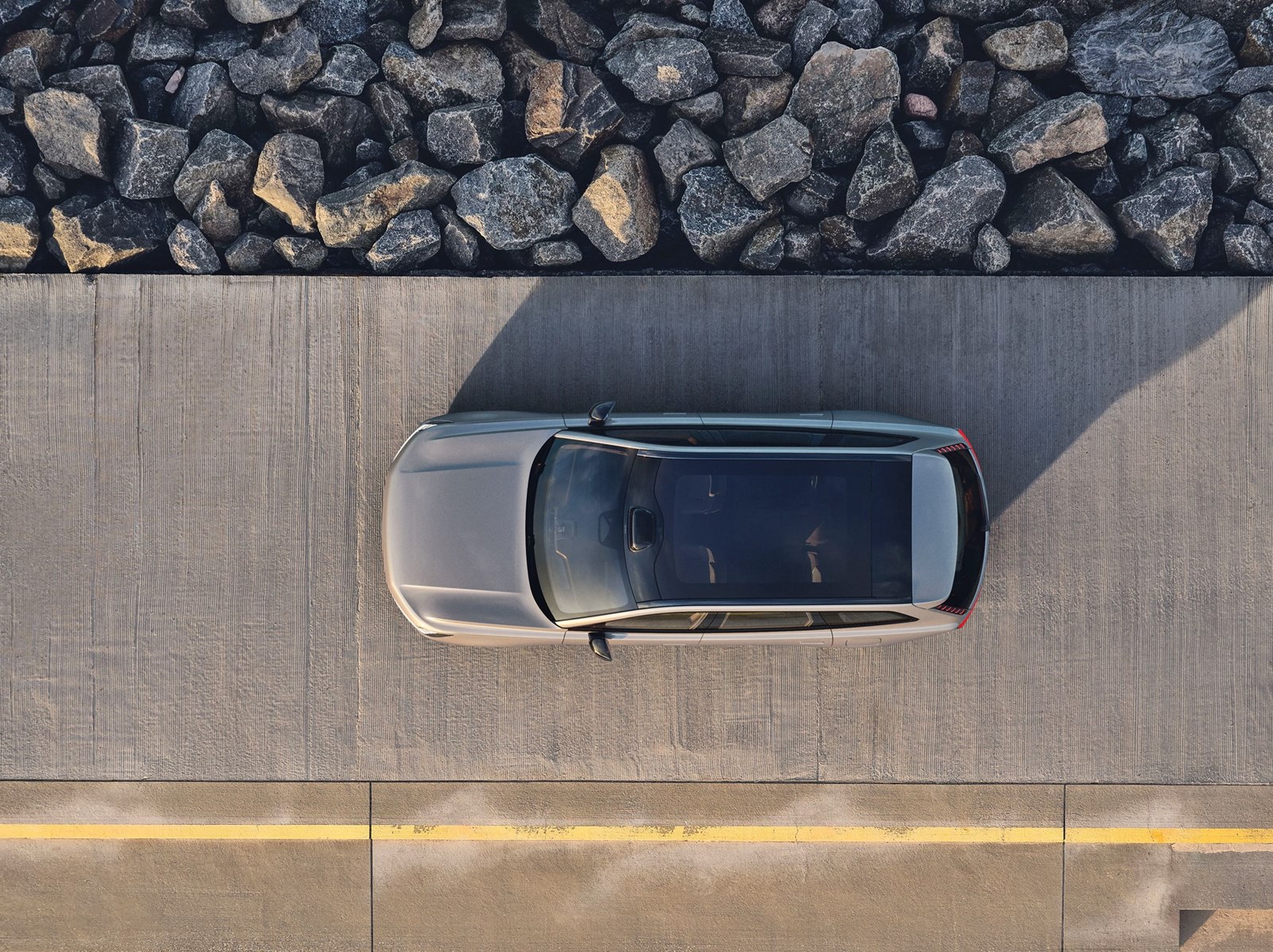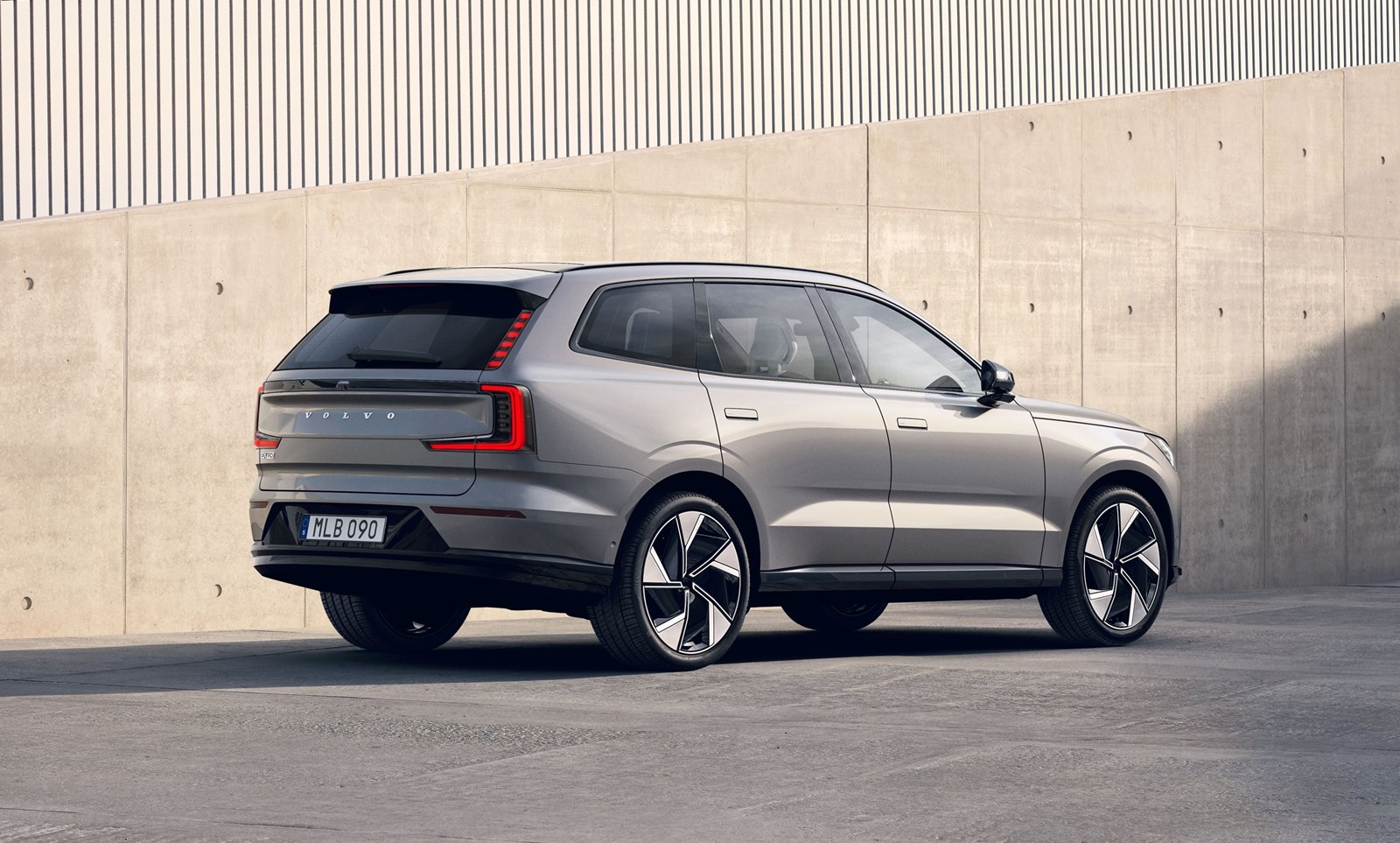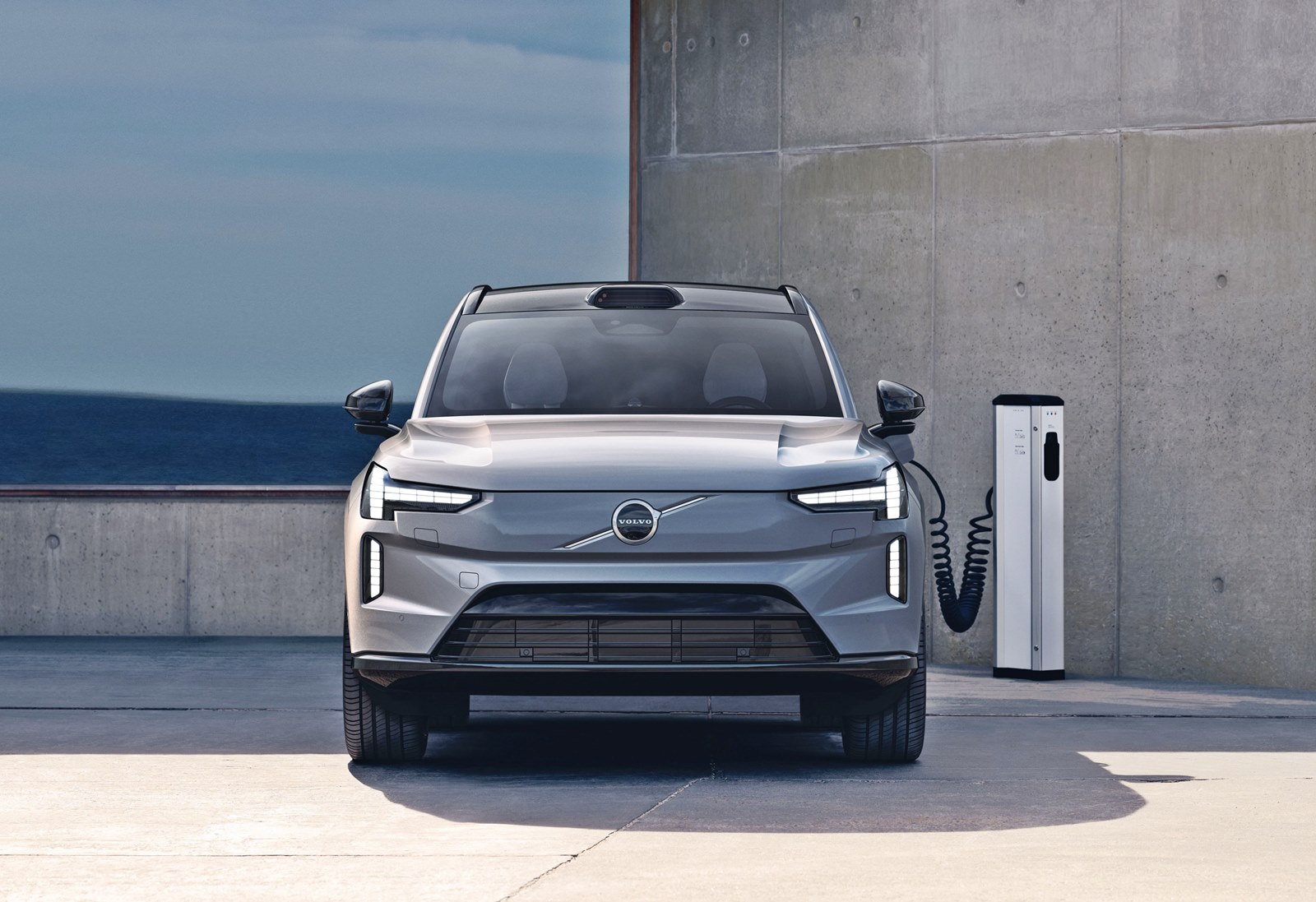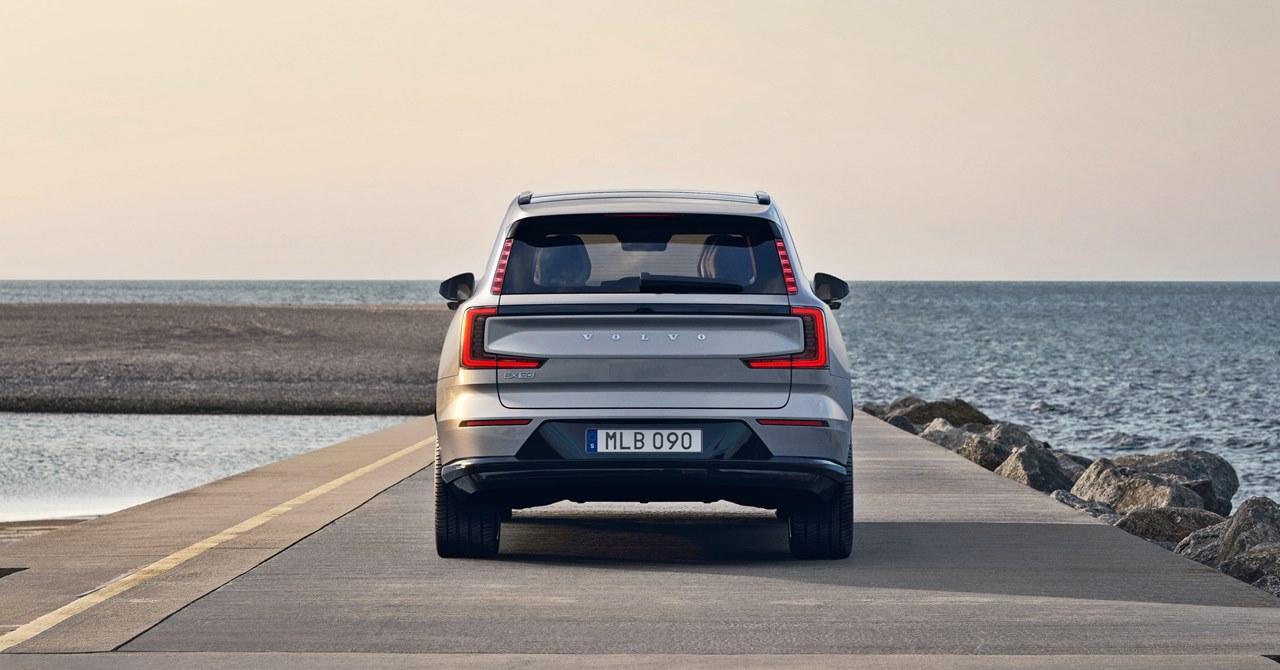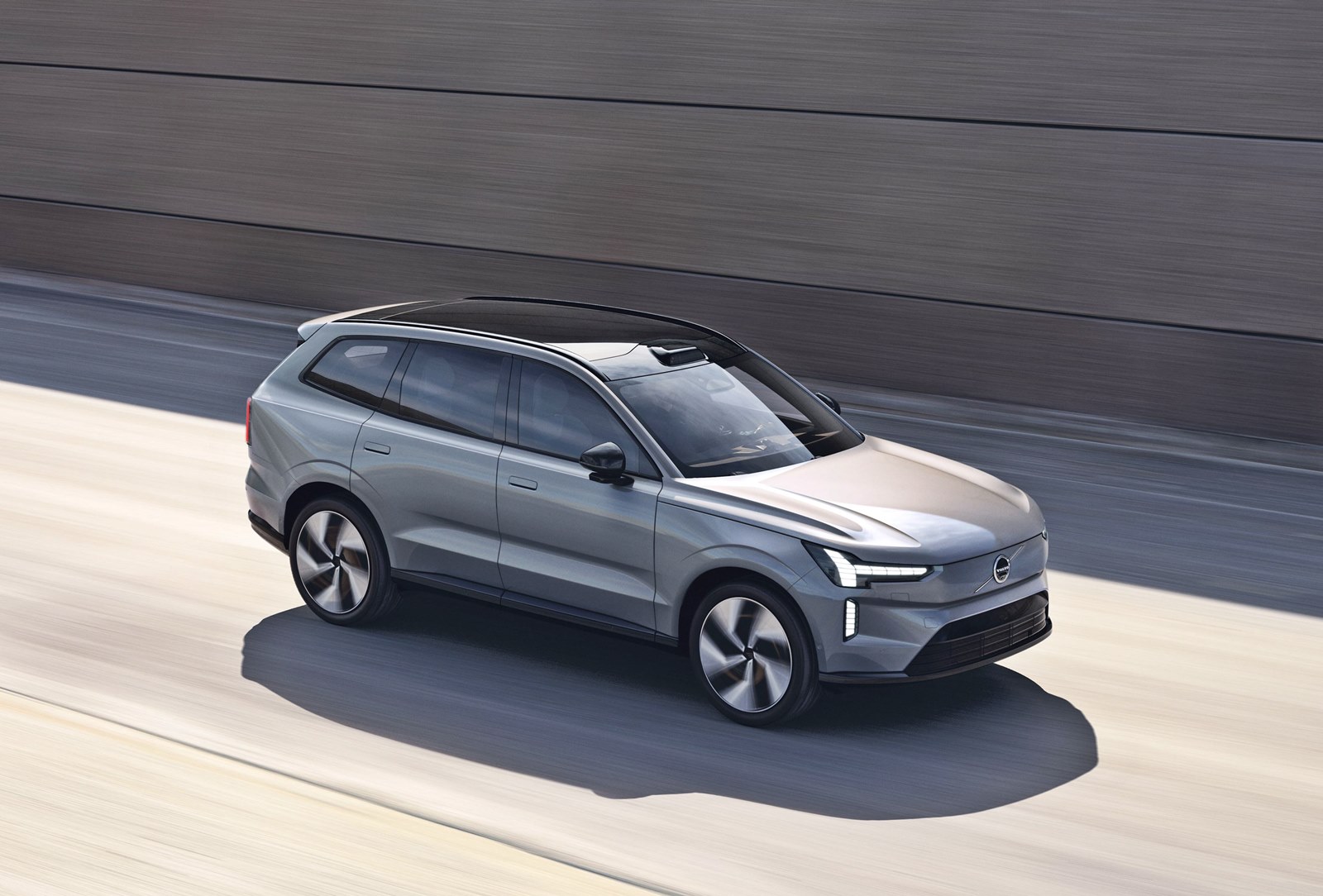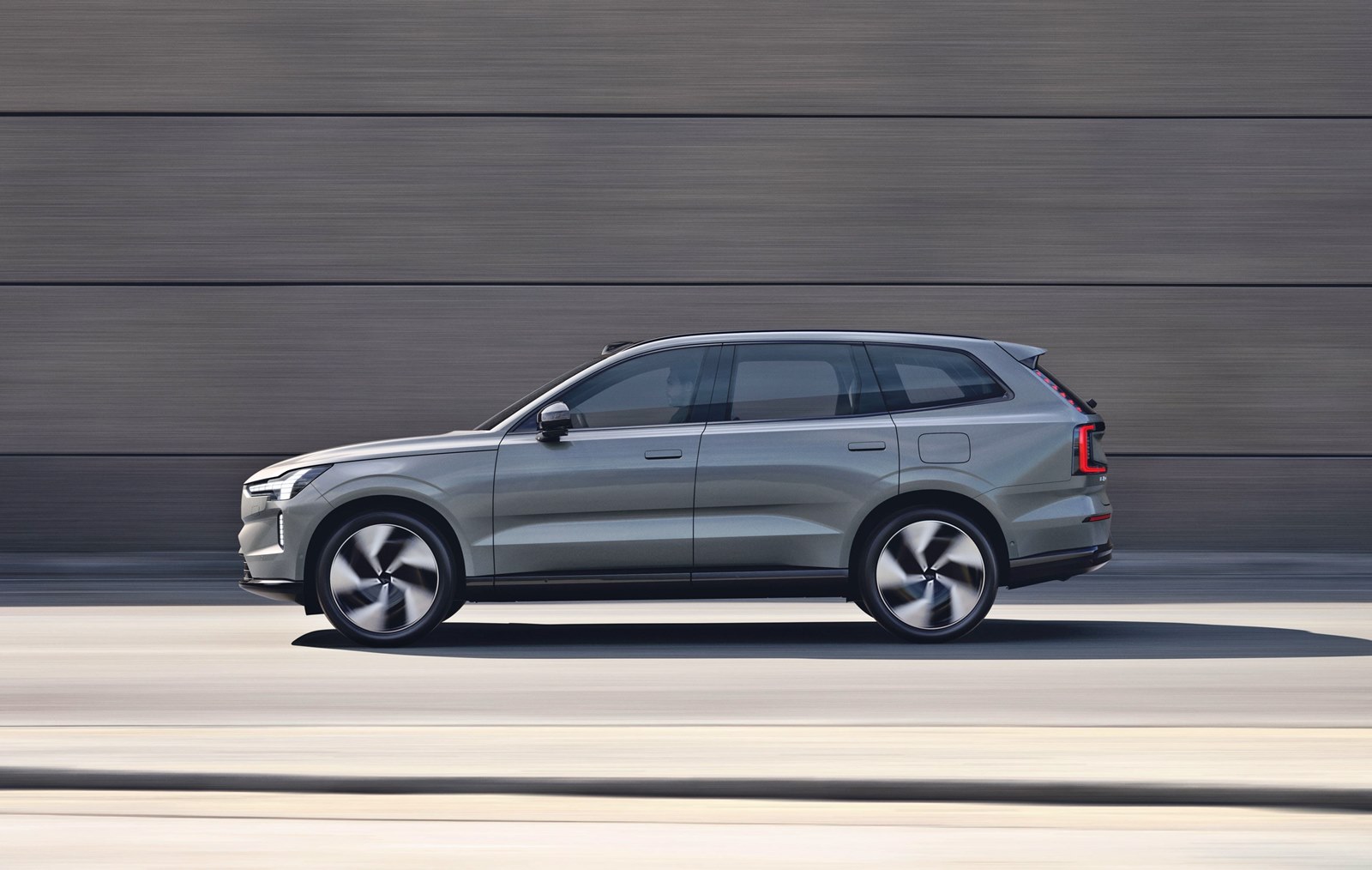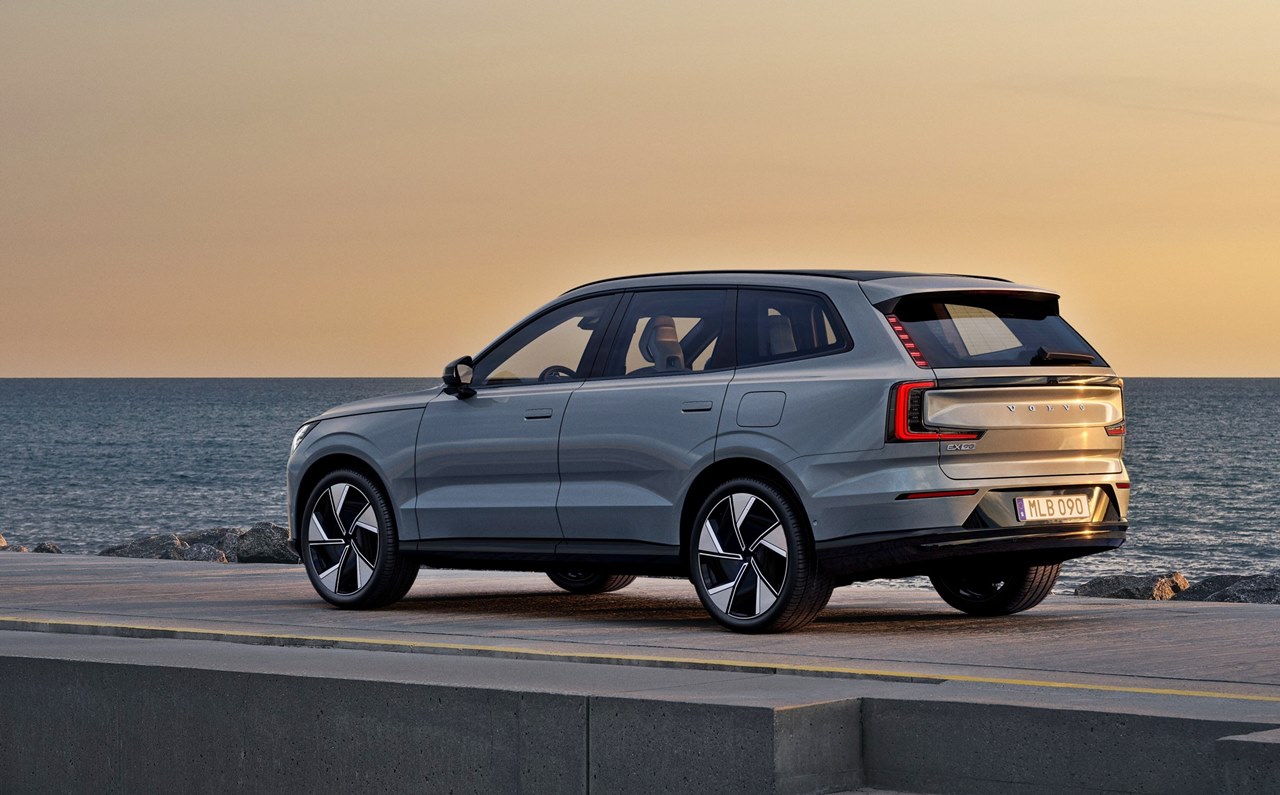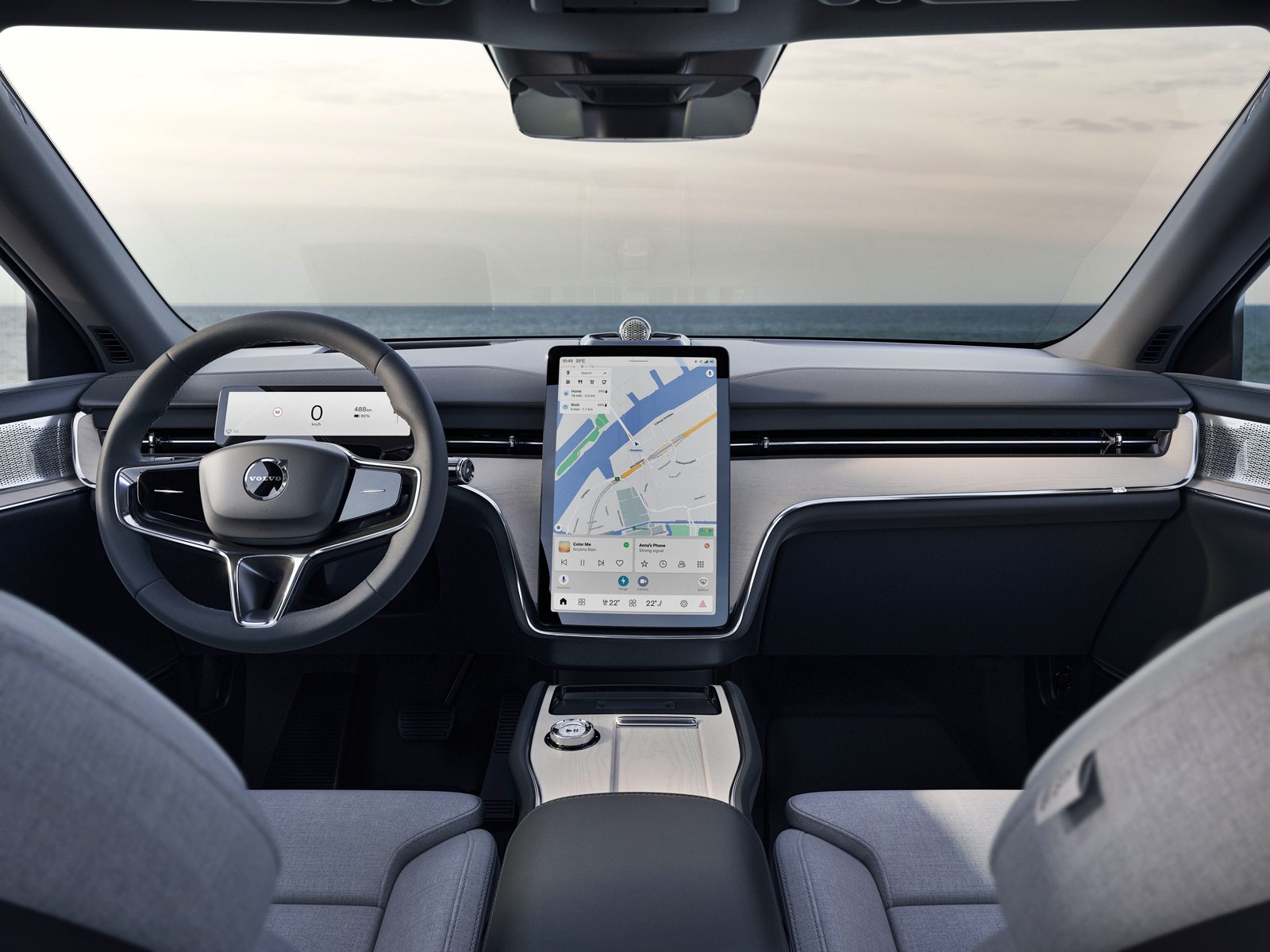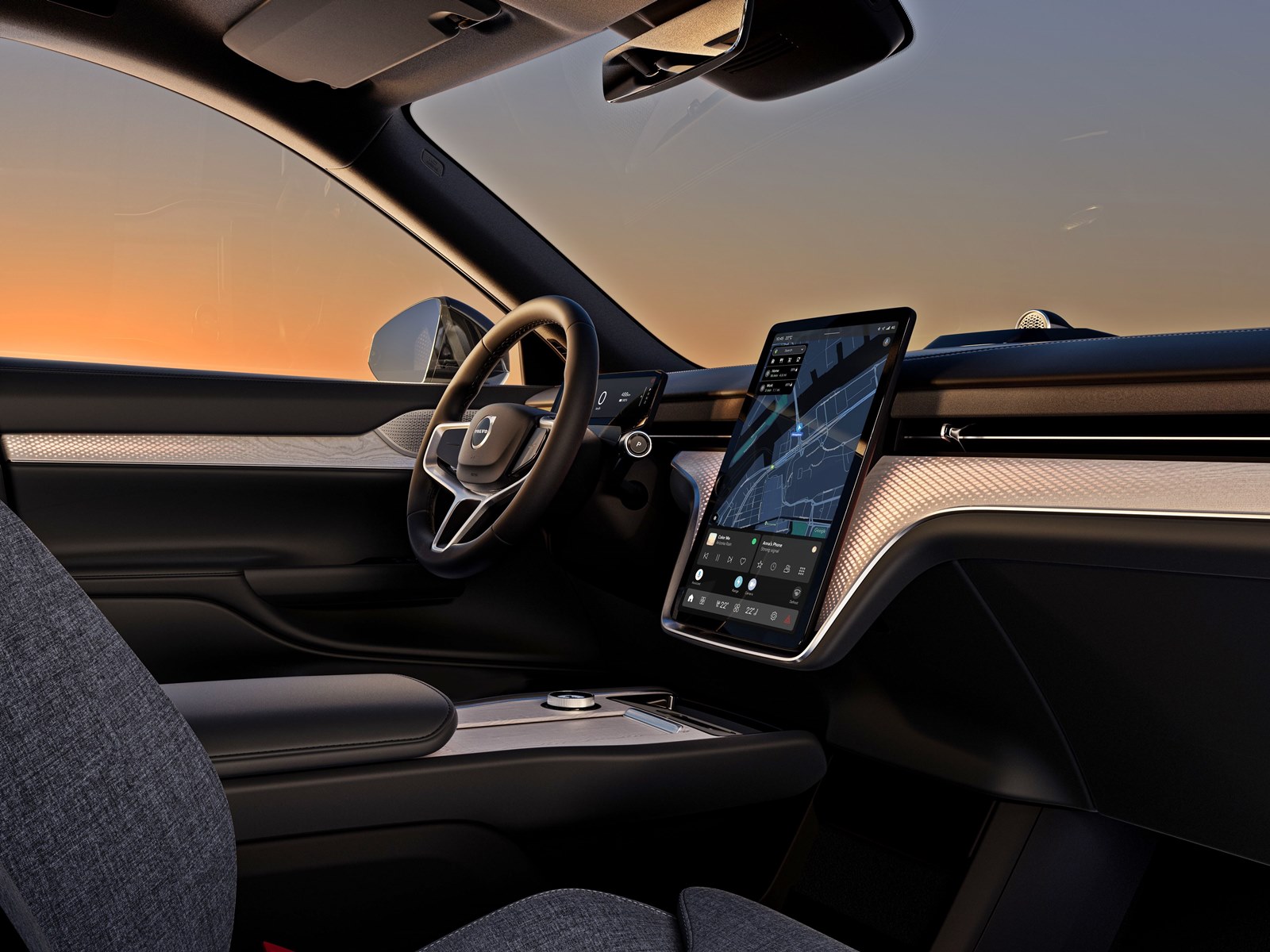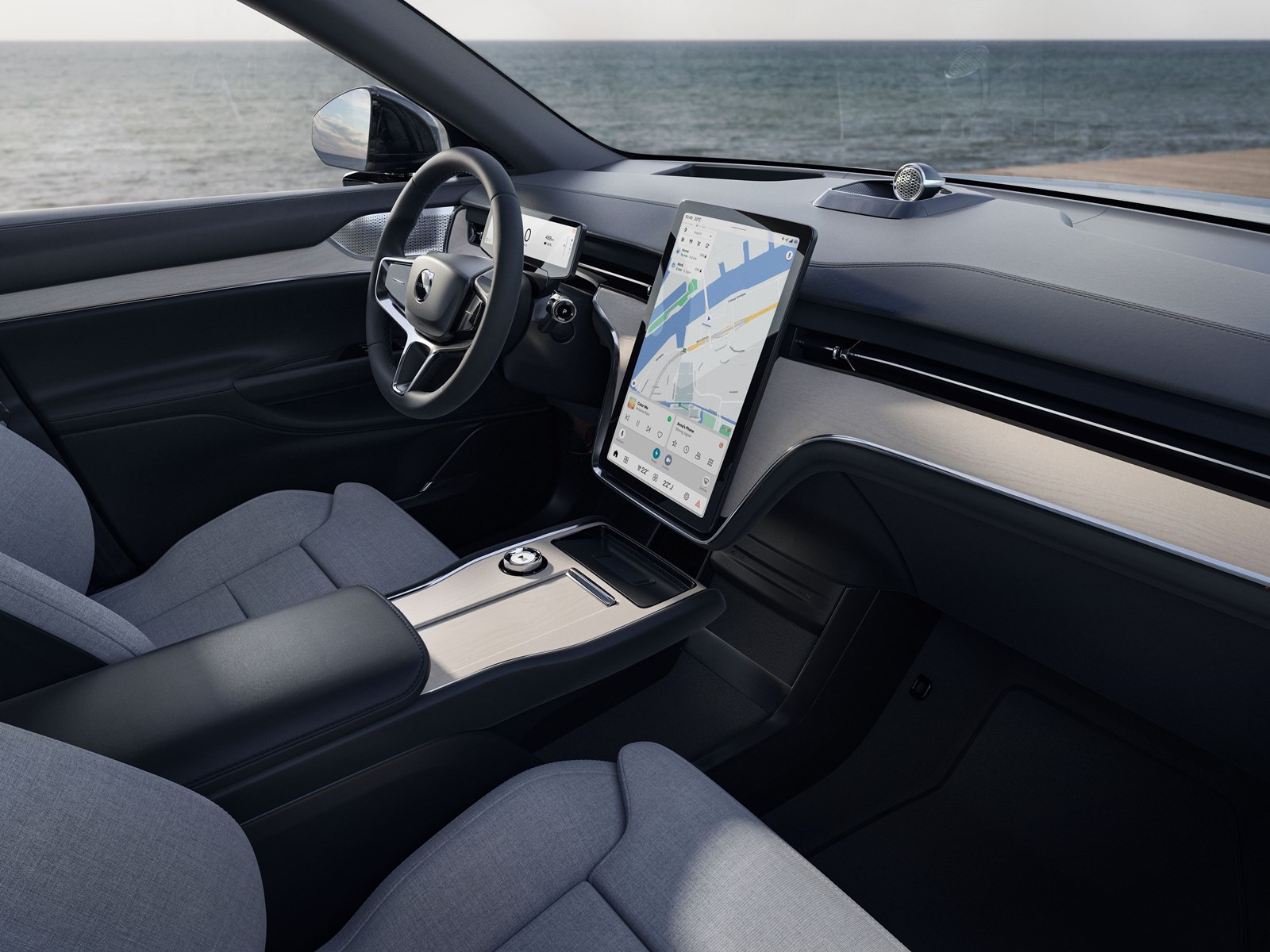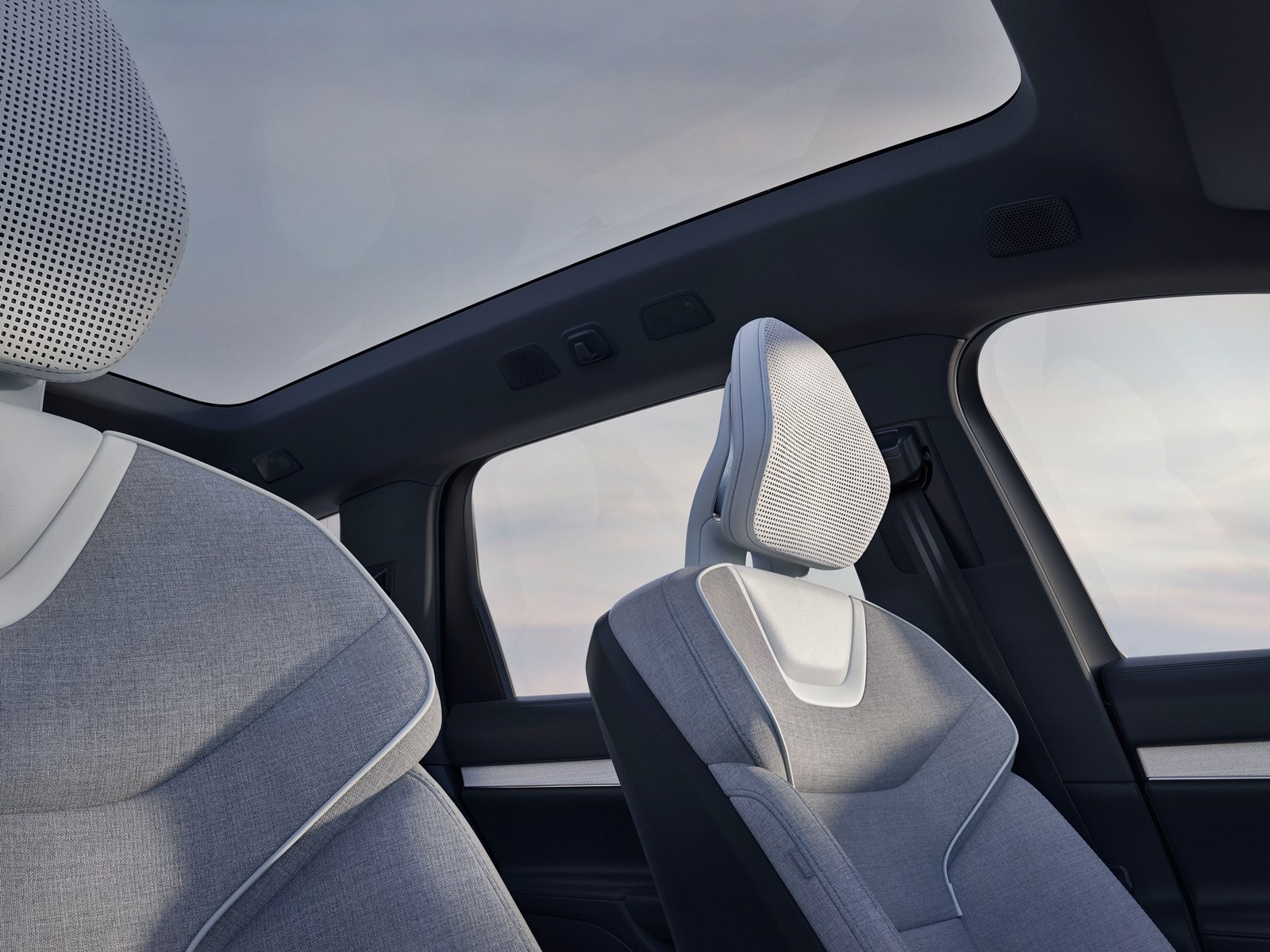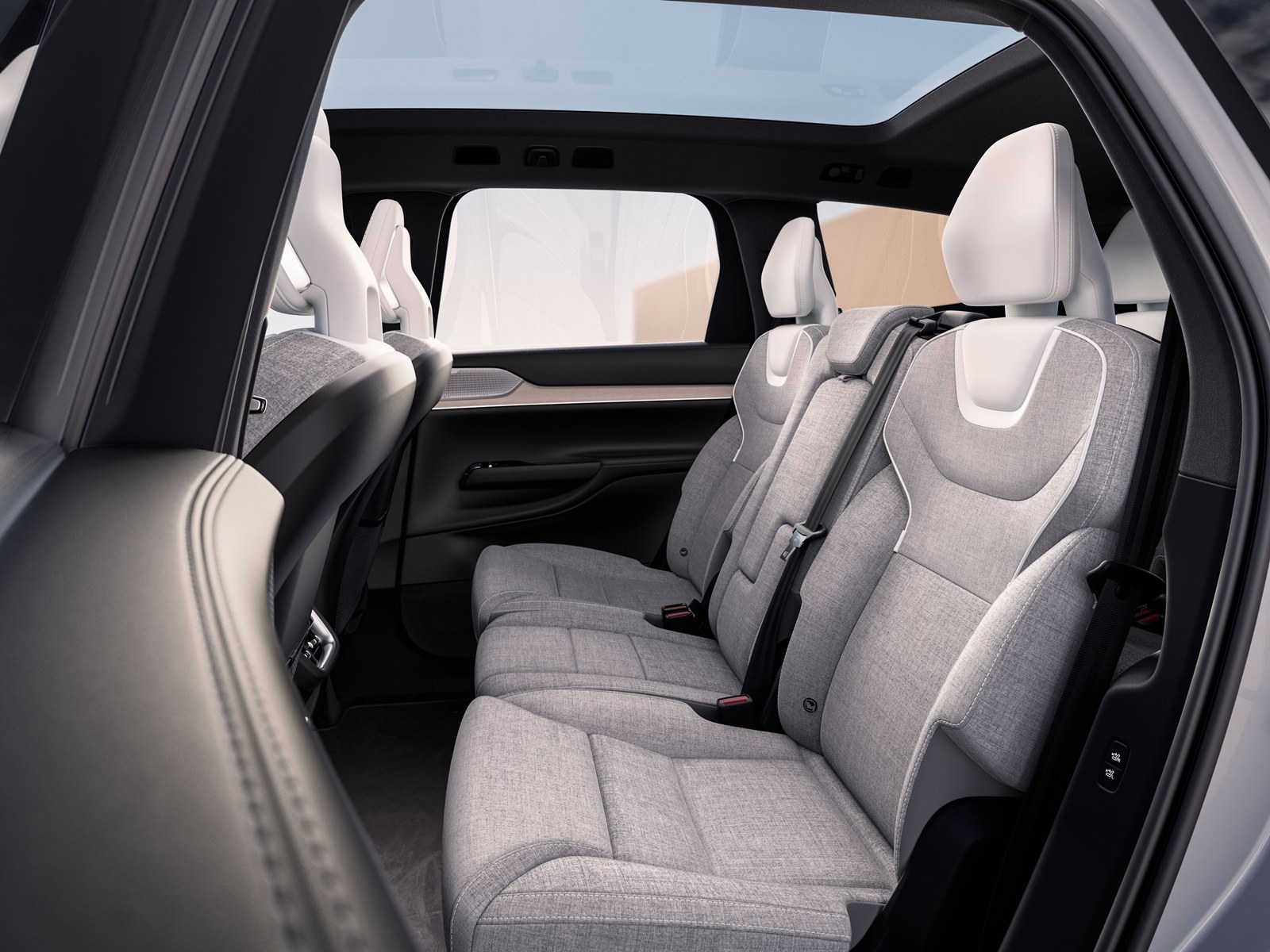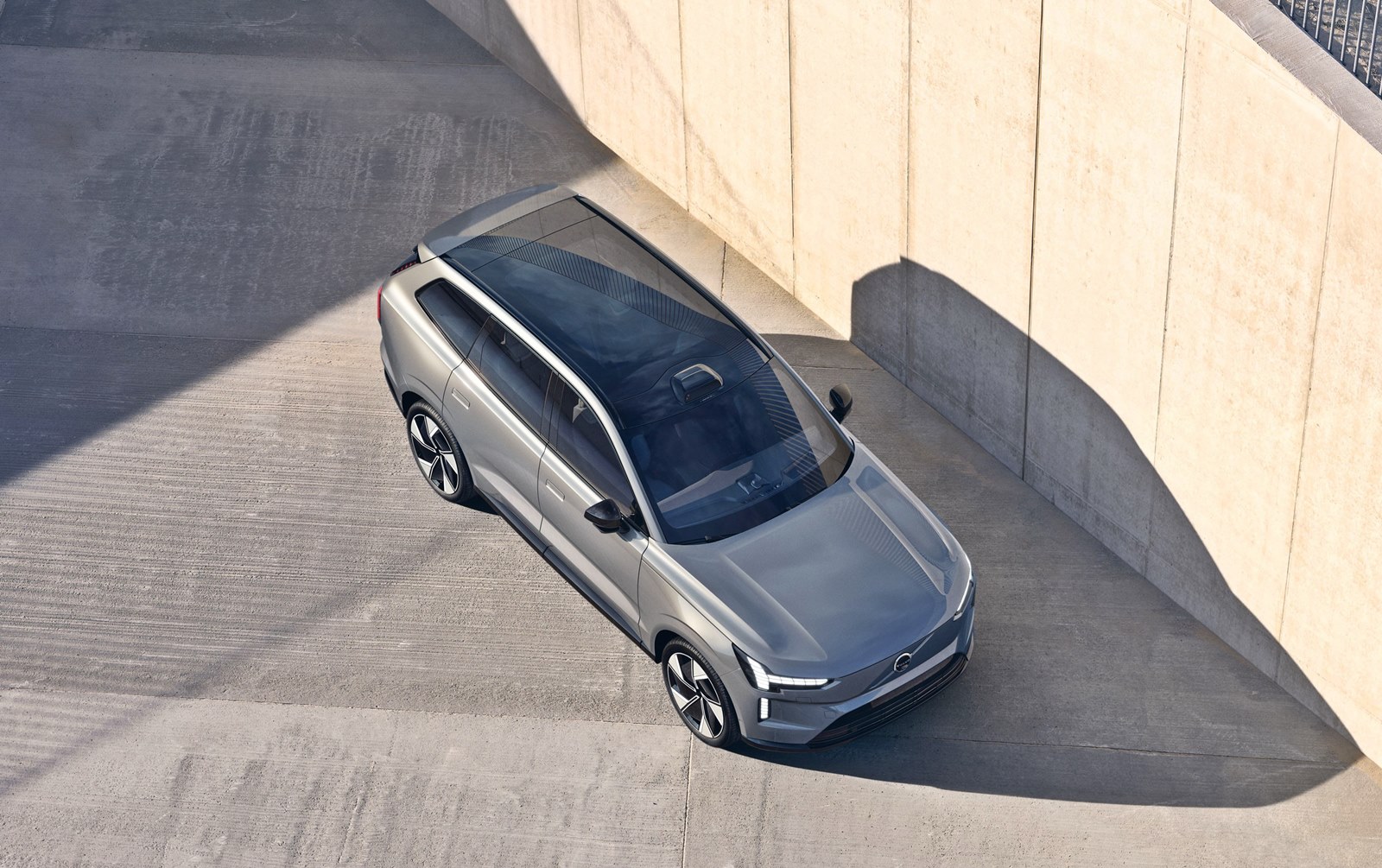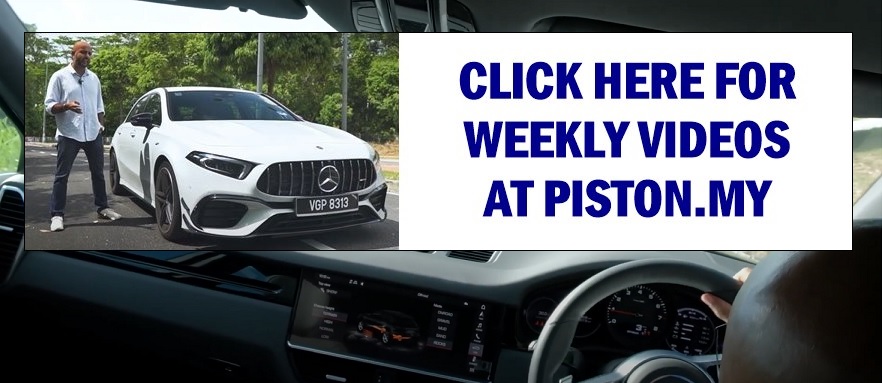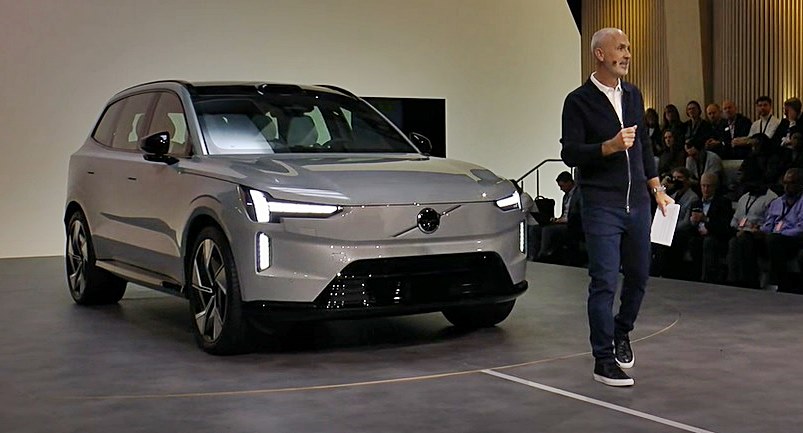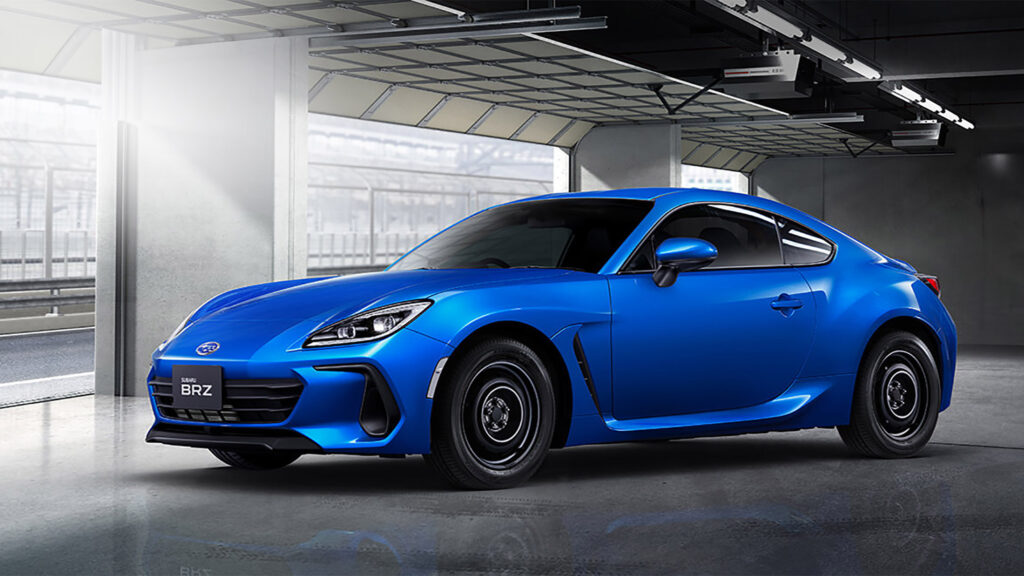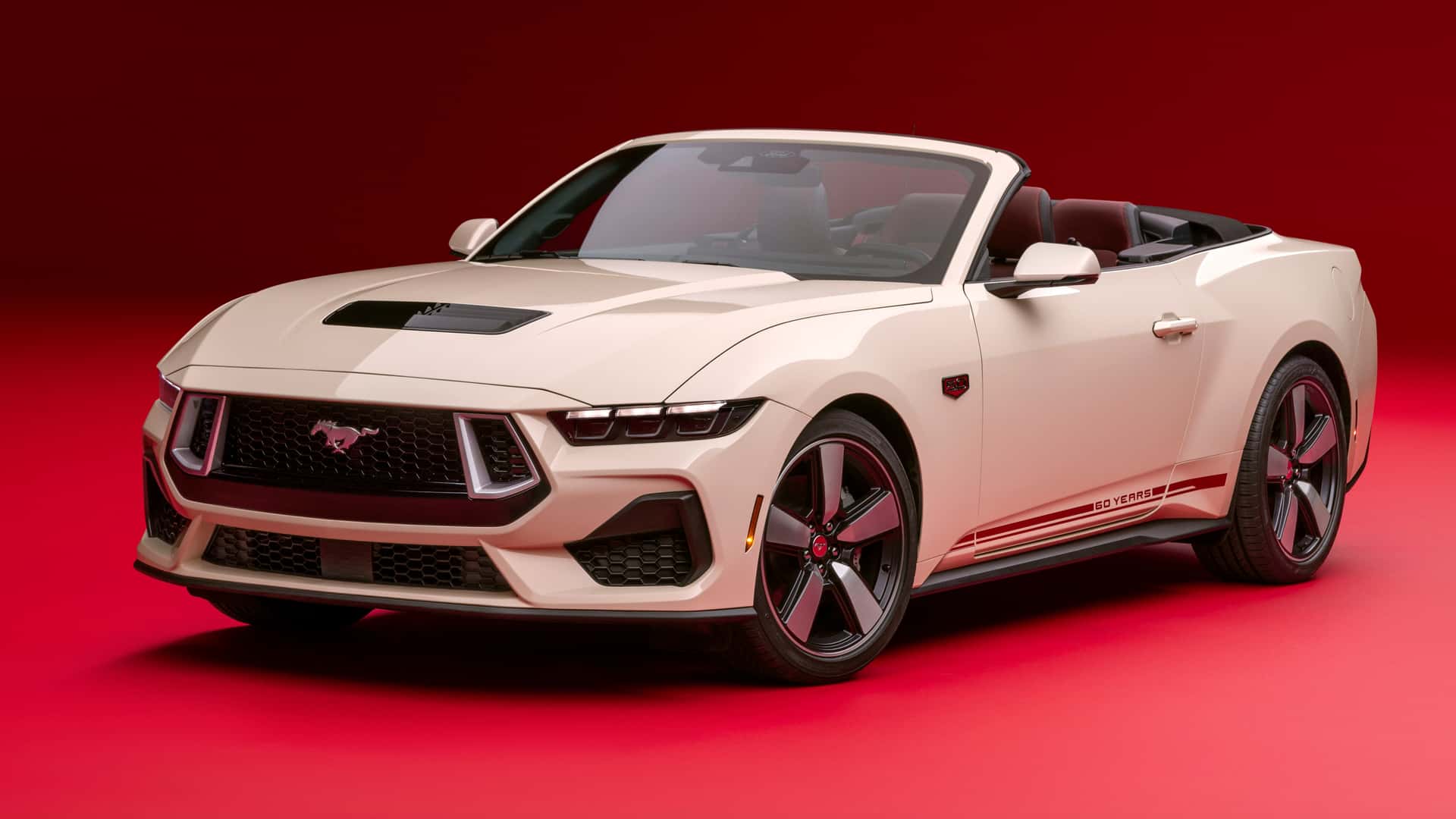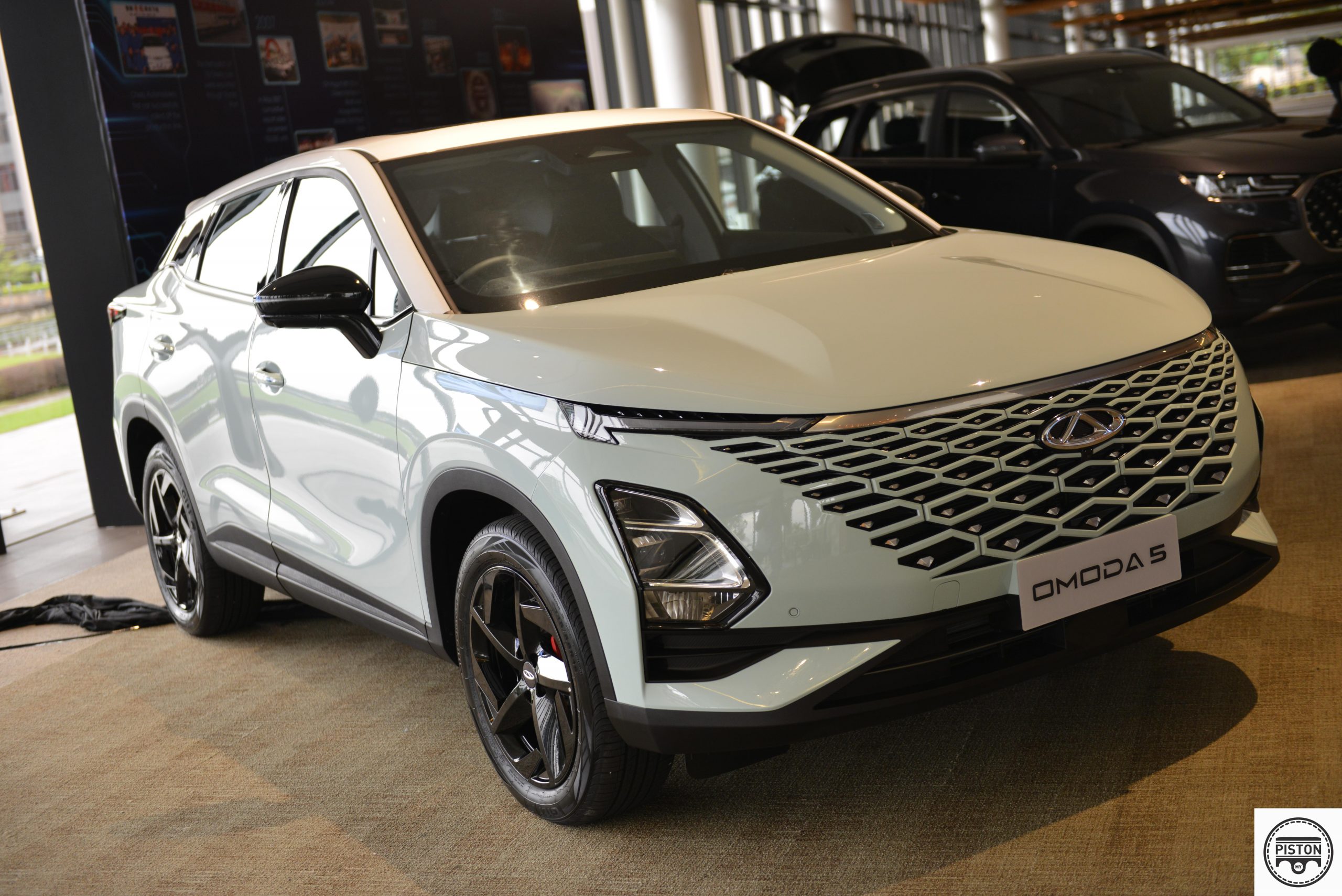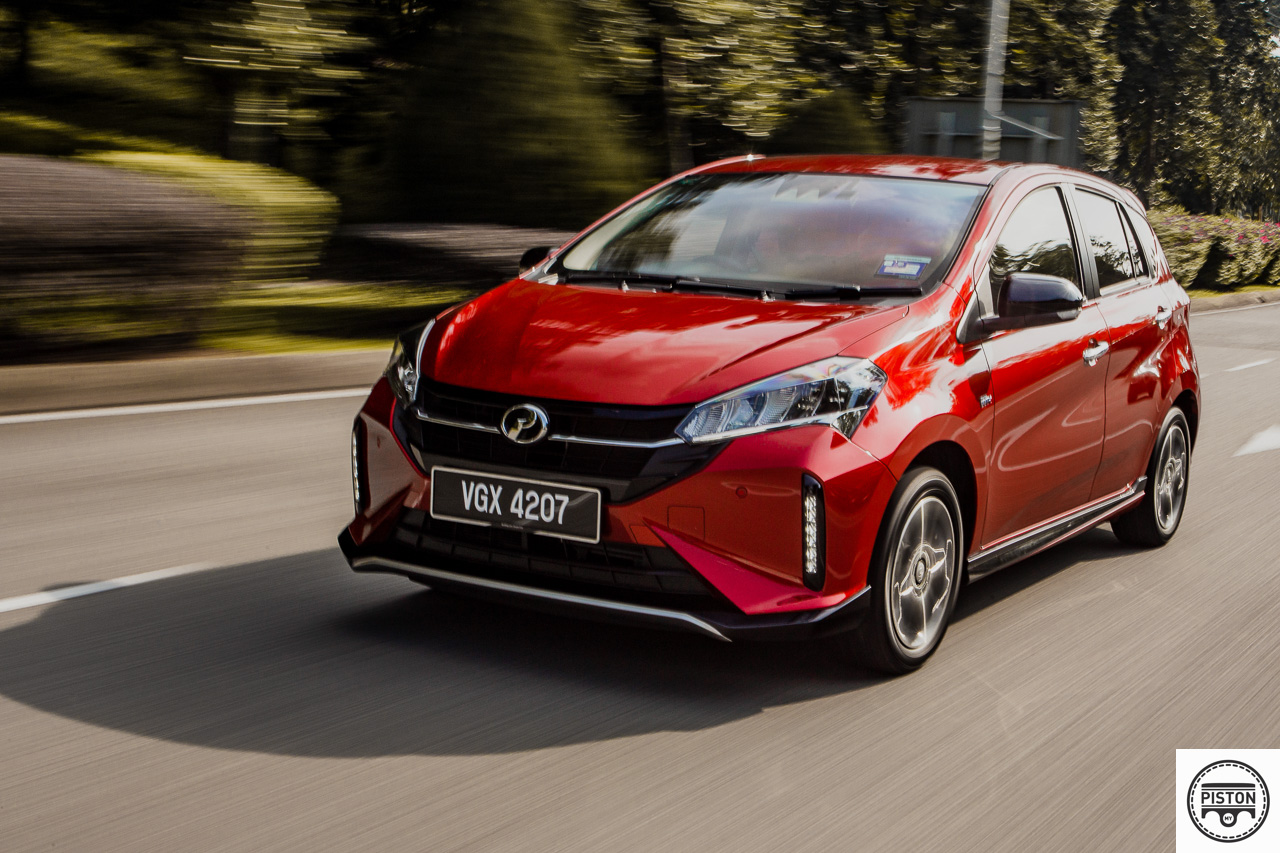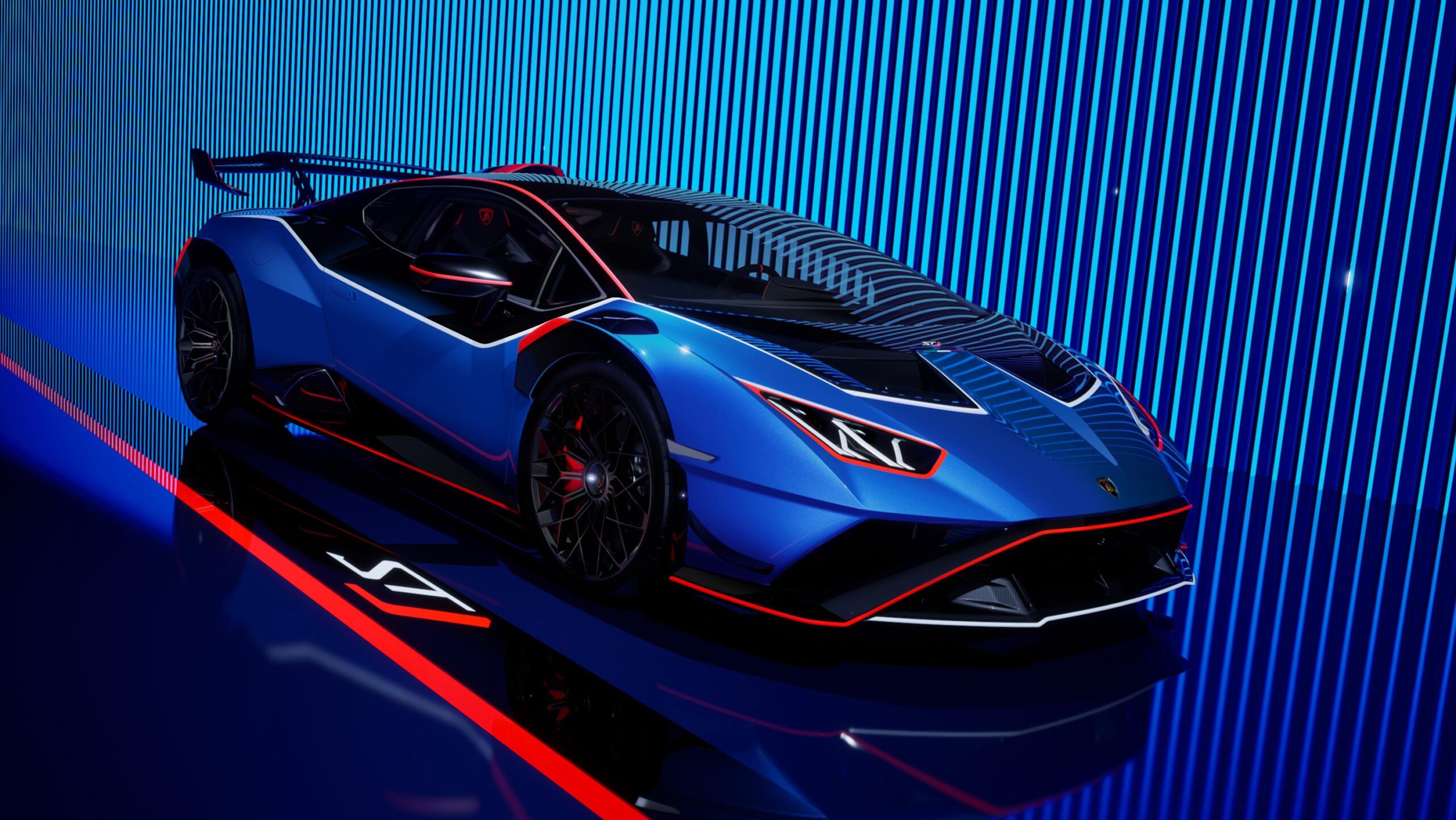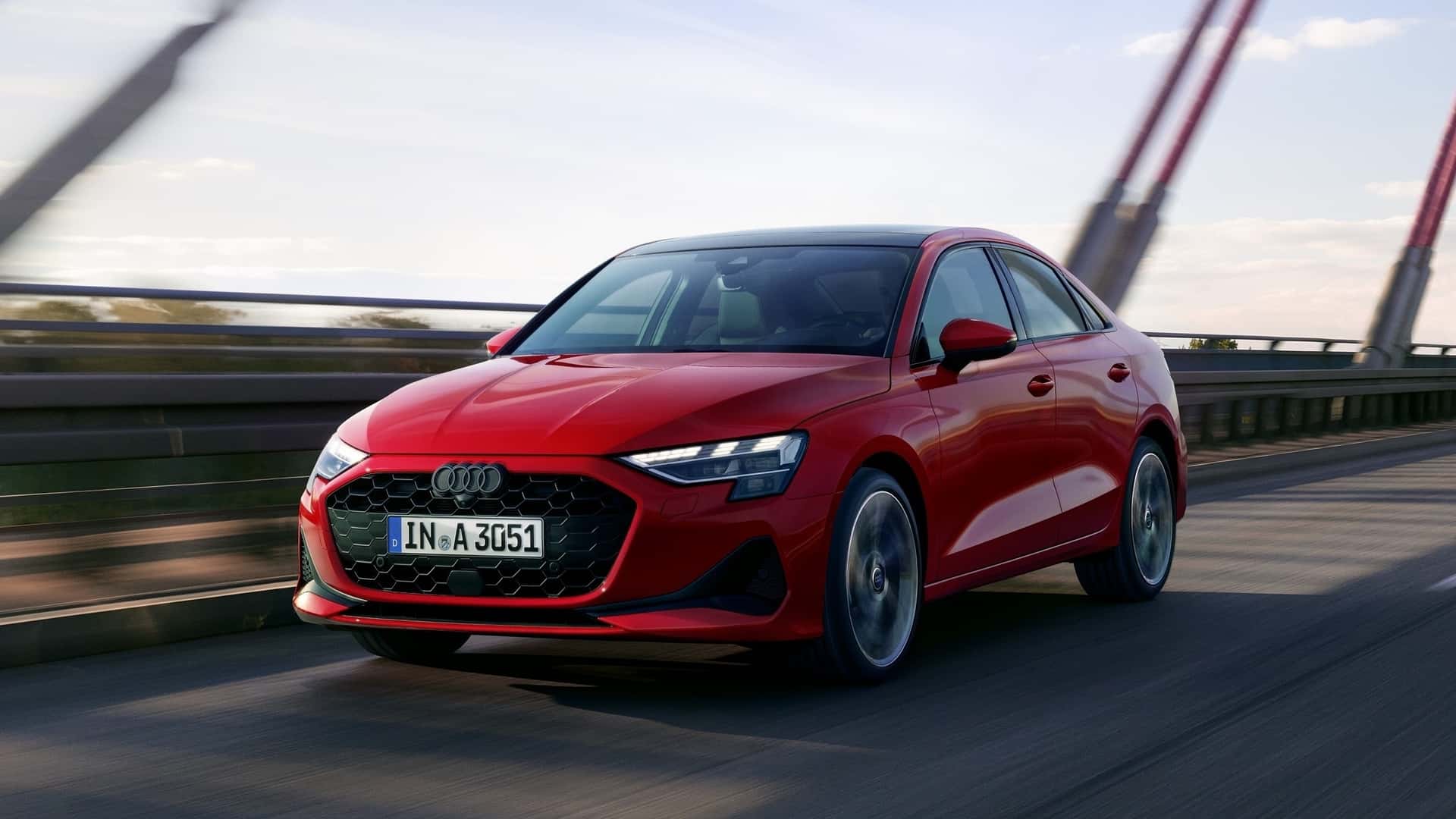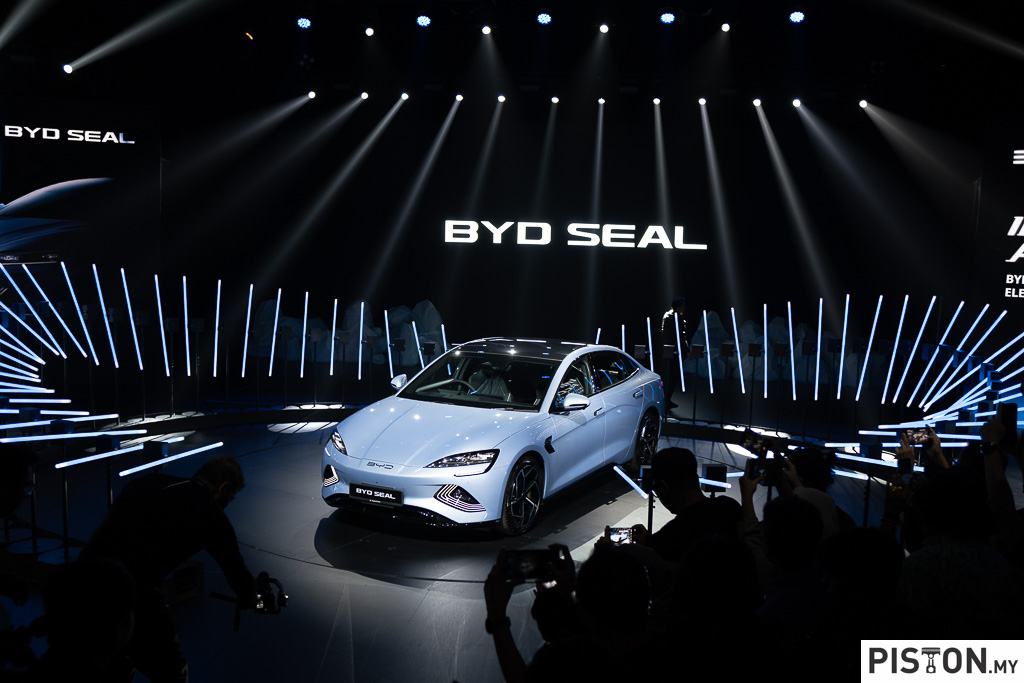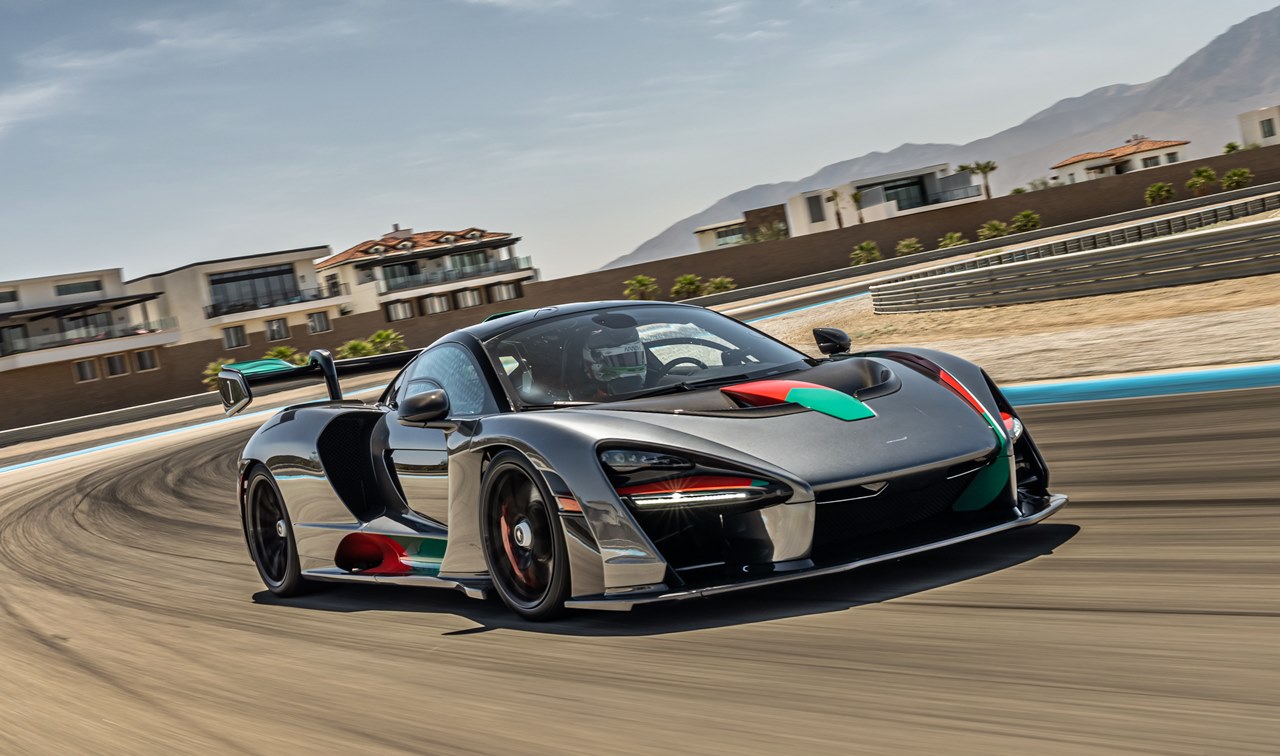20 years after Volvo introduced its first SUV, the Swedish carmaker begins a new era with a totally new SUV that takes it into a fully electric future. Unveiled today in Sweden, the new EX90 is the first of a series of models that will enter the market at the rate of one per year. Volvo has declared that by 2030, it will sell only zero emission electric vehicles – one of the most ambitious electrification blueprints in the automotive industry.
“The Volvo EX90 is a statement for where we are, and where we are going,” said Jim Rowan, Volvo’s CEO. “It’s fully electric with a range of up to 600 kilometres on a single charge, designed to further raise our safety standards, the first Volvo car to be truly defined by its software and part of a wider ecosystem, connecting to your home and your other devices. The Volvo EX90 is the start of something new for Volvo Cars in many ways.”
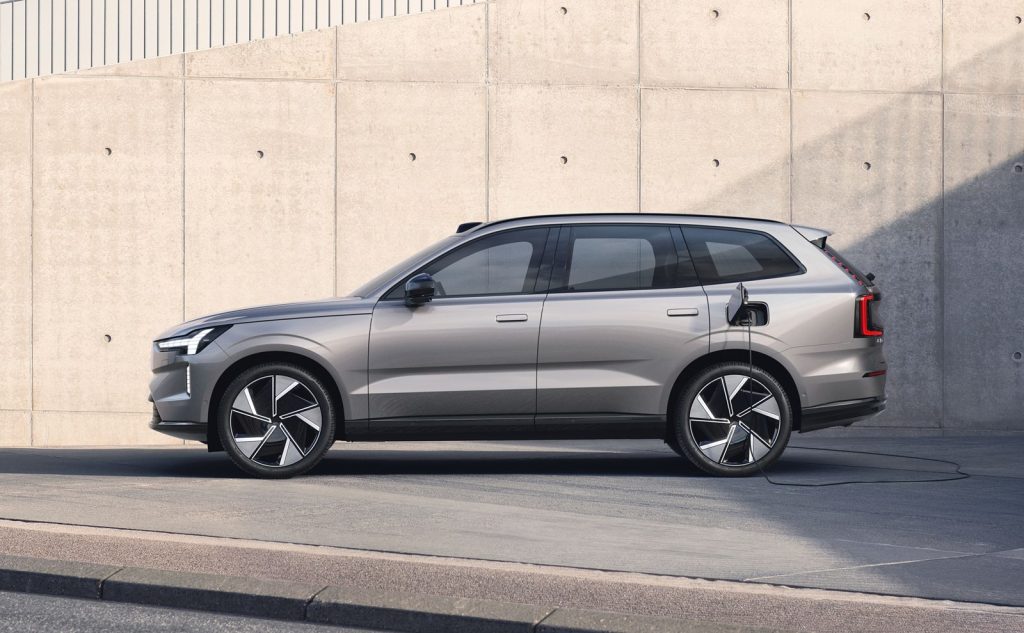
Volvo design has always been faithful to Scandinavian themes and even in the 21st century, its roots are as strong as ever and evident in the design inside and out. At the same time, advanced technologies in core computing, connectivity and electrification optimise efficiency and aesthetics – and, of course, the keystone of the brand – safety.
Safer than any Volvo before it
The standard safety in the 7-seat EX90 is higher than any Volvo model before it. It has intelligence which is enhanced over time as it learns from new data and receives updates. There’s also an invisible shield of safety enabled by the latest sensing technology. State-of-the art sensors like cameras, radars and lidar (Light Detection and Ranging) are connected to the EX90’s high-performance core computers, where NVIDIA DRIVE runs Volvo Cars’ in-house software to create a real-time, 360-degree view of the world.
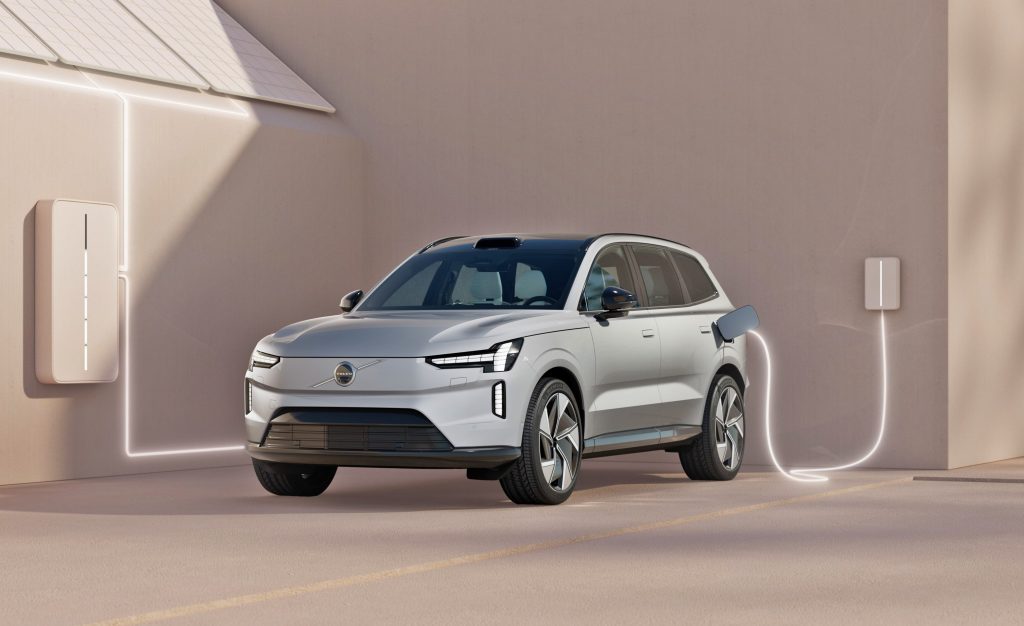
Lidar sensors are able to scan the road ahead in all lighting conditions at high and low speeds. Small objects hundreds of metres ahead can be detected, allowing more time to inform, act and avoid. The sensors also contribute to improve the reliability and overall performance of Volvo’s assisted driving function Pilot Assist, with a new steering support while changing lanes.
While the focus of sensors in other vehicles has been outwards, the EX90 also has sensors that scan the inside of the vehicle. Special sensors and cameras, powered by in-house developed algorithms, assess eye gaze concentration. This allows detection of distraction, drowsiness or other inattentiveness – beyond what has been possible in a Volvo vehicle to date.
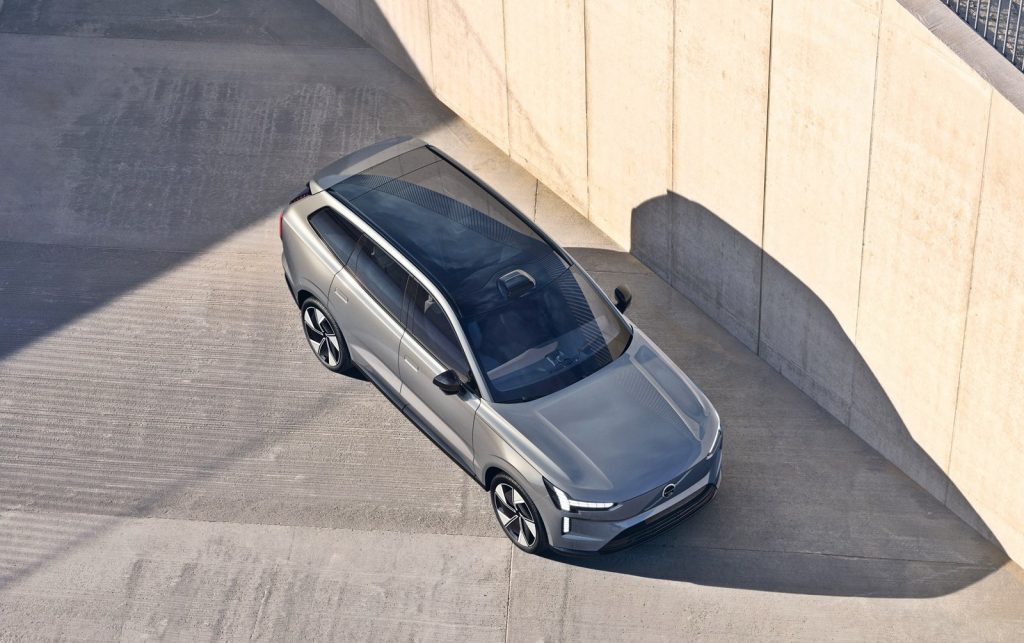
In most cases, the system will alert the driver and then use various means to make the driver more attentive to driving. In the event of the driver falling asleep or having a serious illness, the vehicle will autonomously come to a safe stop and send out a call for help.
With the advanced and extensive array of sensors, the EX90 is the first Volvo that’s hardware-ready for unsupervised driving in the future. So in regions where autonomous motoring is permitted, the EX90 will be ready for use immediately.
‘Advanced computer on wheels’
The core system – powered by NVIDIA DRIVE AI platforms Xavier and Orin, Snapdragon Cockpit Platforms from Qualcomm Technologies and in-house developed software by Volvo engineers – runs most of the core functions inside the car, from safety and infotainment to battery management. It would not be wrong to regard it as a ‘very advanced computer on wheels’. And just as smartphones and computers receive periodic updates that improve their performance over time, the EX90 can also get software updates over the air.
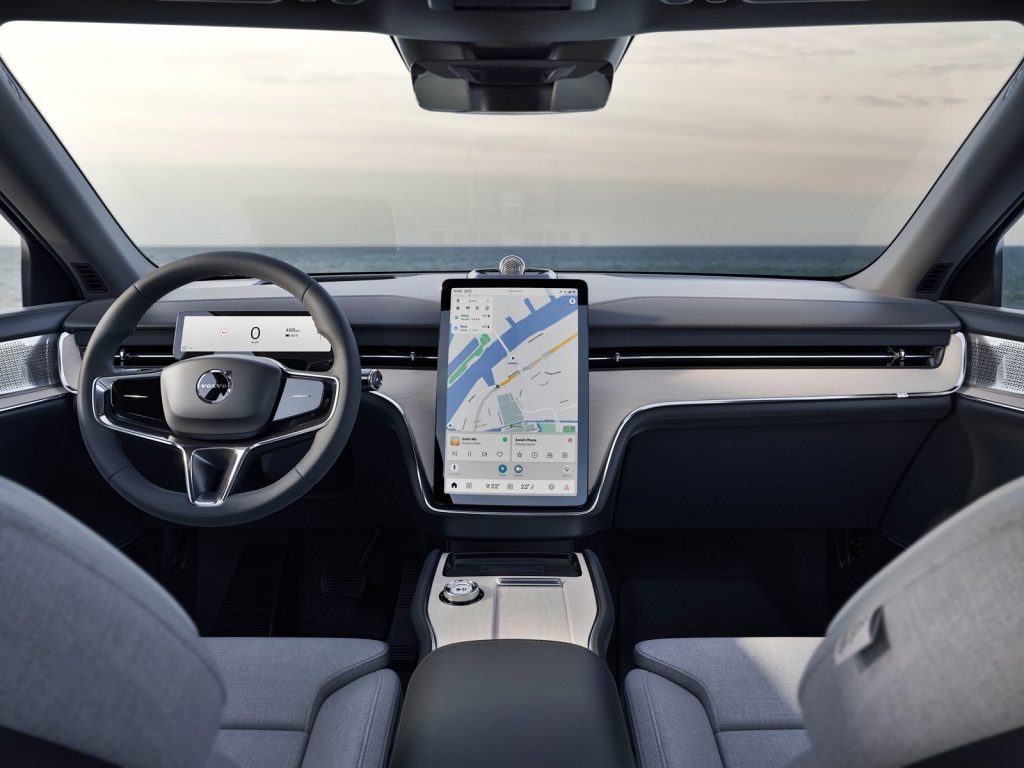
5G connectivity and Google built in
A 14.5-inch centre screen on the dashboard is the command centre providing information as well as entertainment. It comes with Google built in so many will already be familiar with the interface and use of apps. For those who have Apple devices, the EX90 also comes with wireless Apple CarPlay. And as 5G starts to be available in more and more countries, the EX90 will have the high-speed connectivity available as well. The EX90 comes with phone key technology as standard. The smartphone serves as the ‘key’ and automatically unlocks the car, starting a personal welcoming sequence.
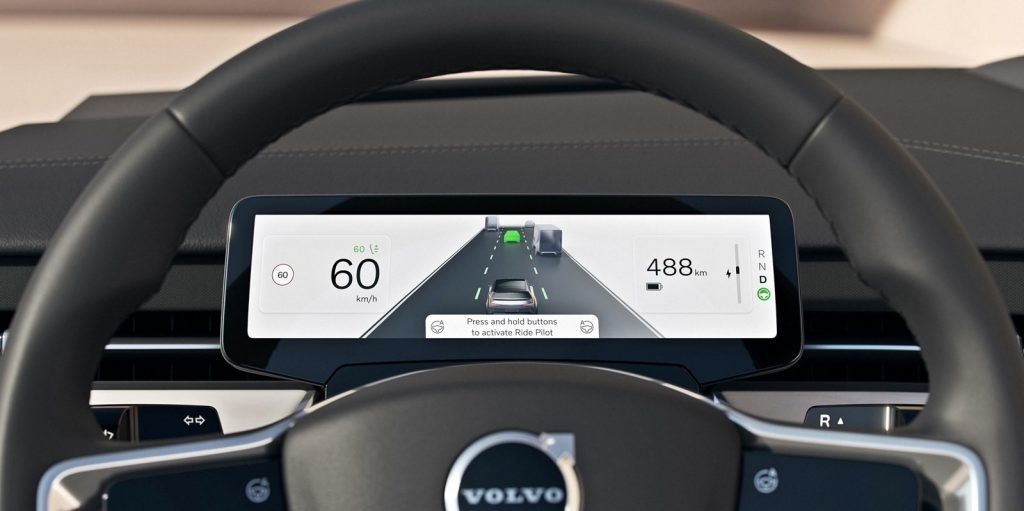
The overall user experience inside the EX90 is designed on the principle of complexity made simple, avoiding information overload. The displays in the centre stack and in front of the driver provide information in a smart way that can be customised to personal preference. In this way, the driver can stay focussed on driving.
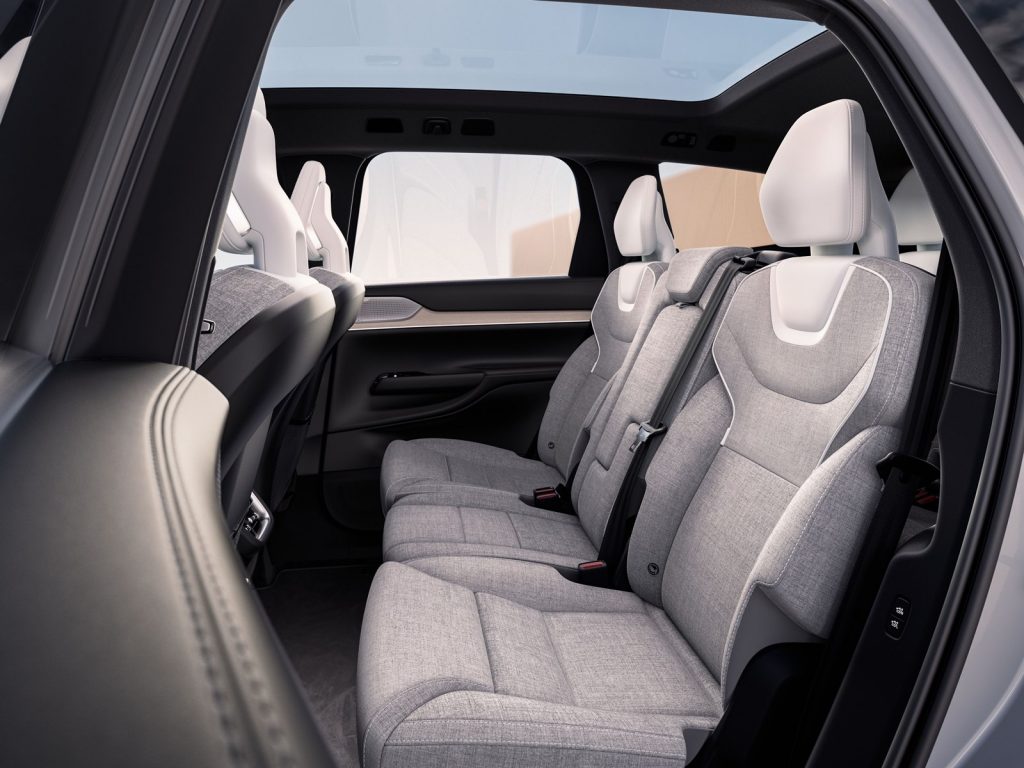
Propulsion system
The focus on the sensor technologies overshadows the propulsion system which Volvo only touches on briefly. The initially available twin-motor AWD version is powered by a 111-kWh battery pack and two permanent magnet electric motors together generating up to 380 kW (517 ps) and 910 Nm of torque in the highest performance version.
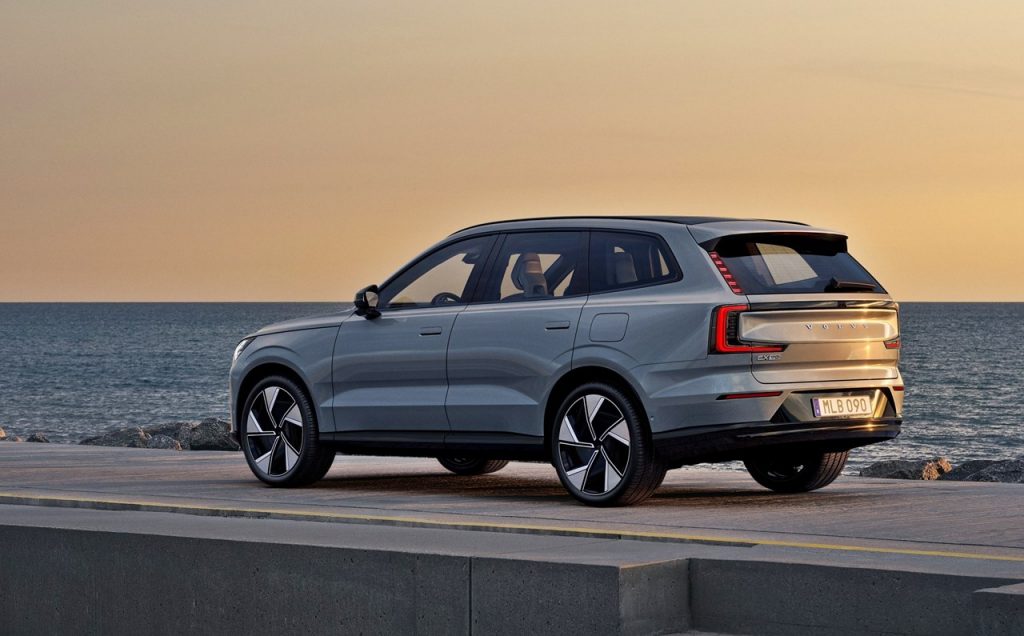
Volvo says that the EX90 will be able to travel up to 600 kms on a single charge. Recharging of the battery pack from 10% to 80% will be under 30 minutes, presumably using a high-speed charging station.
The EX90 is the first Volvo with all the necessary hardware to enable bi-directional charging. This means that the battery pack can also supply electricity to external devices – or even help to recharge the battery pack of another Volvo EV.
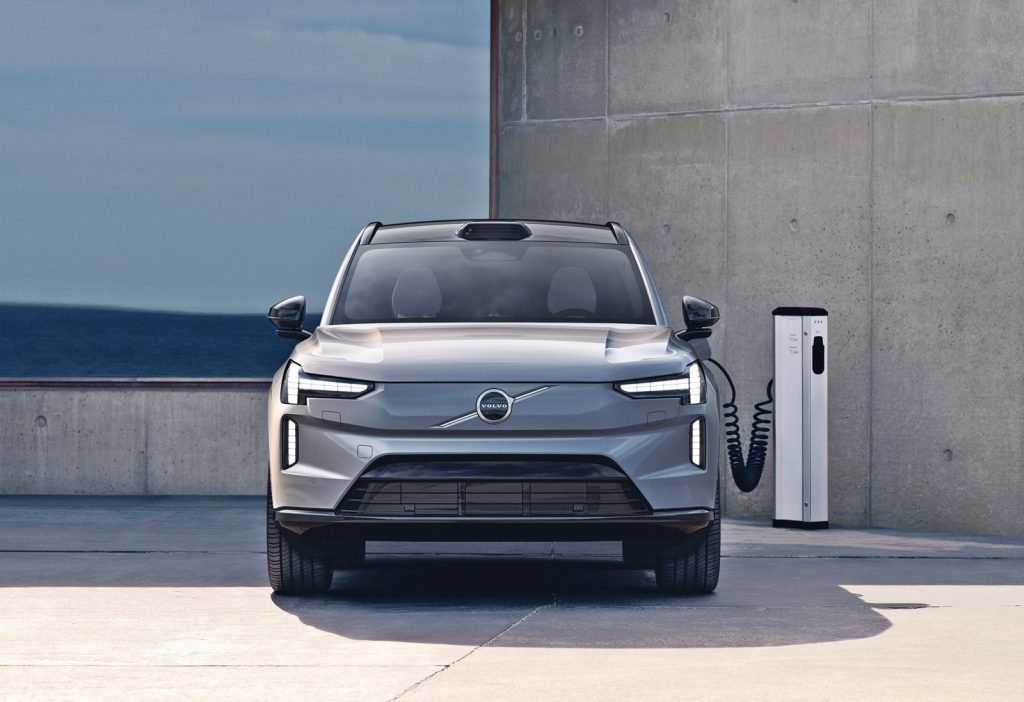
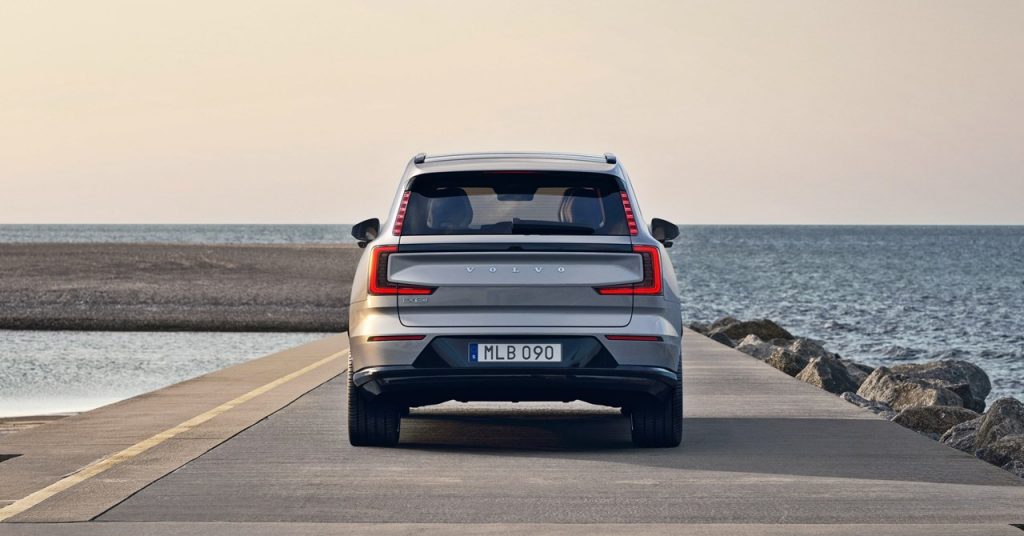
A Volvo would not be a Volvo if it was not designed and made with sustainability in mind. The EX90 contains approximately 15% of recycled steel, 25% of recycled aluminium as well as 48 kgs of recycled plastics and bio-based materials, which corresponds to around 15% of the total plastic used in the car – the highest level of any Volvo car to date.
Production of the EX90 will begin in 2023 in the USA and then in China.
